September 22, 2019
Martha O'Kennon

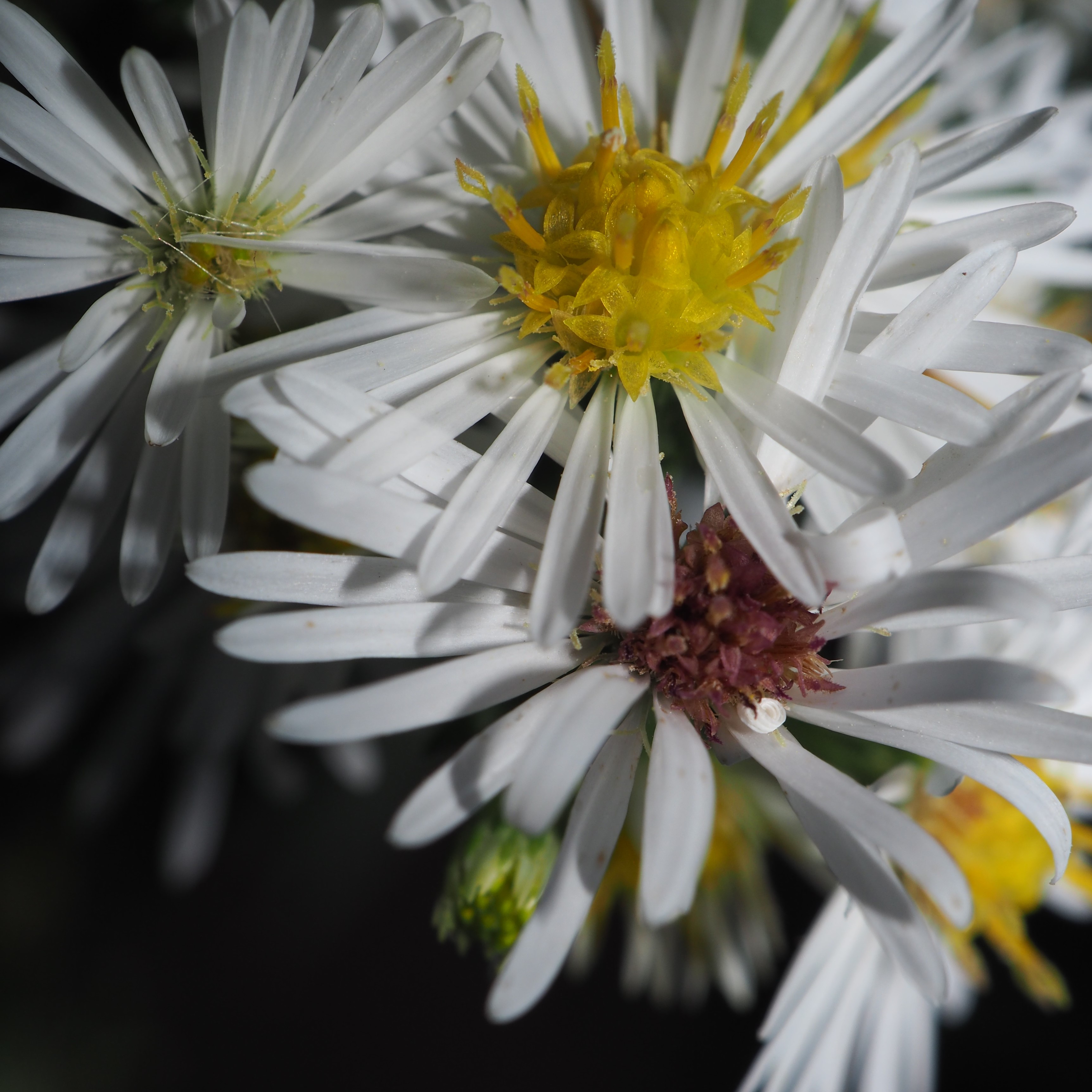
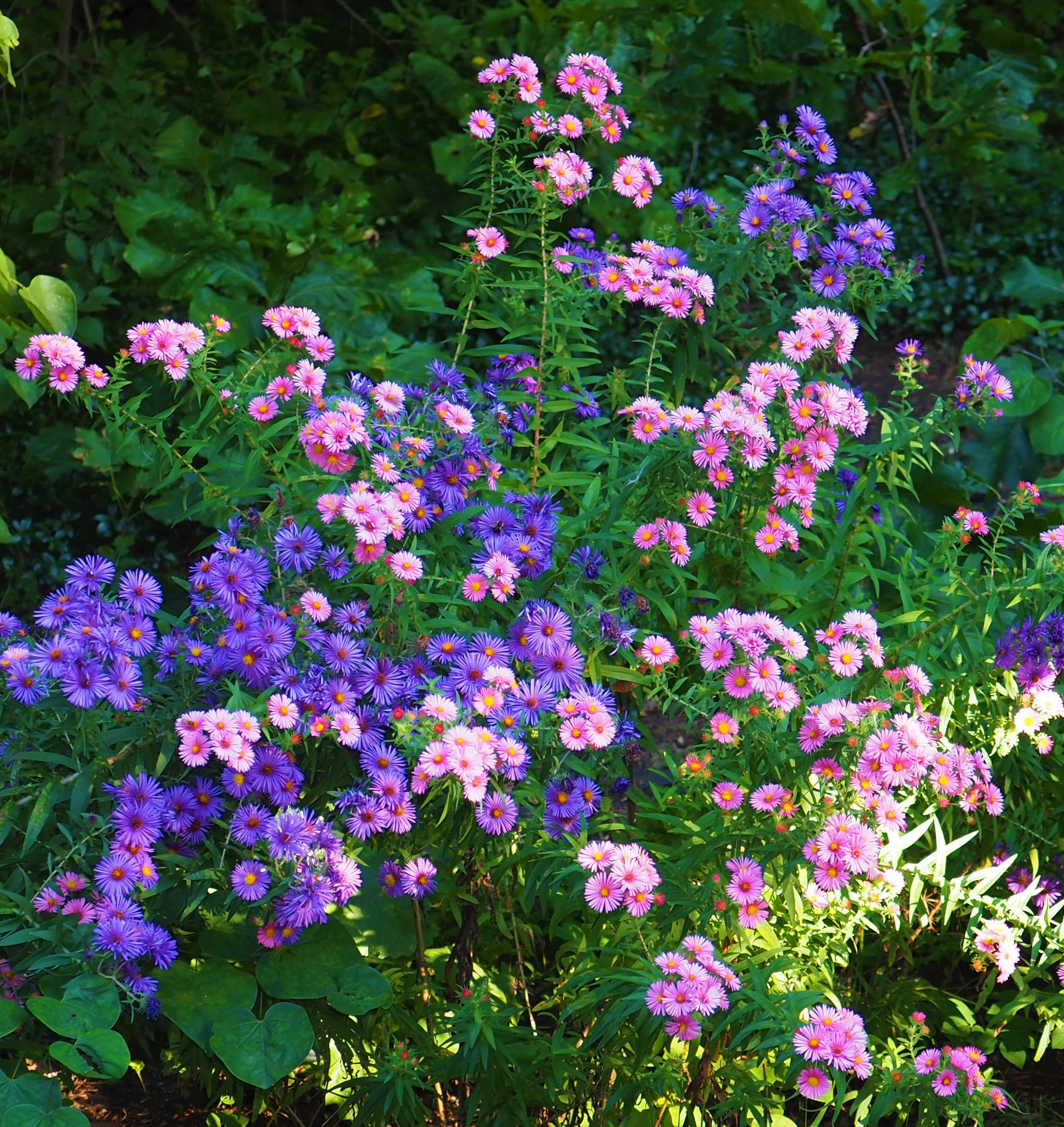
The goldenrod is turning brown. It still has quite a few wasps and bees and even a butterfly or two. Weatherwise, it goes from comfortable fall-ish weather to hot and humid. The asters have quickly come into their peak. Many shades from purple to pink. Some things that held back their affection from the goldenrod are attracting colorful bees, butterflies, and a few Hover Flies. Here is a bright purplish-pink aster, the tiny American Daisies (magnified a lot!), and more asters, this time two huge plants merging together in bluish-purple and pale pinks.
Remember that there is information in the name of the file for each image. You can see it by mousing over the image - look at the lower left of the screen. Or you can click on the image to get to the (usually) larger image. Then the info is displayed in the address line above. Sometimes the second click will actually display a different view of the original image.
Here are a Small Honey Ant; another one in the Oak Galls; and finally an Eastern Black Carpenter Ant in the Oak Galls (the same bunch of galls that the Bald-faced Hornets were so fond of).



Barklice. It has been a long time since we didn't see this first Barklouse (Polypsocus corruptus) every day or most days. Here is a shot from an interesting angle. :-) This wingless third one is a nymph of some sort or other of Barklouse.
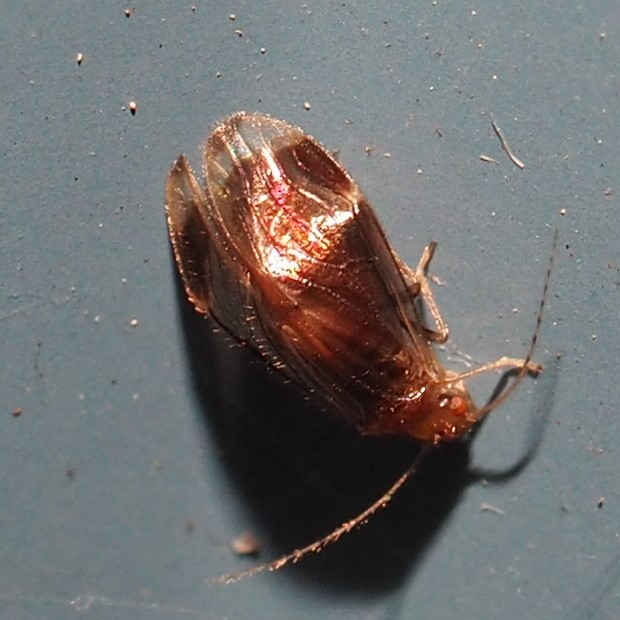
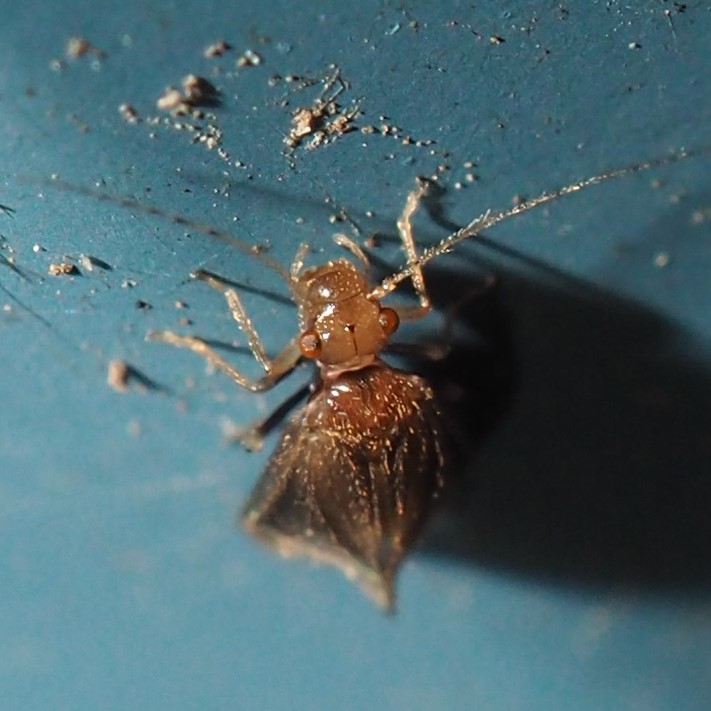

First is that Scaly-winged Barklouse, Echmepteryx hageni. Second is an unknown yellowish Barklouse, probably an adult. Third is another unknown Barklouse.
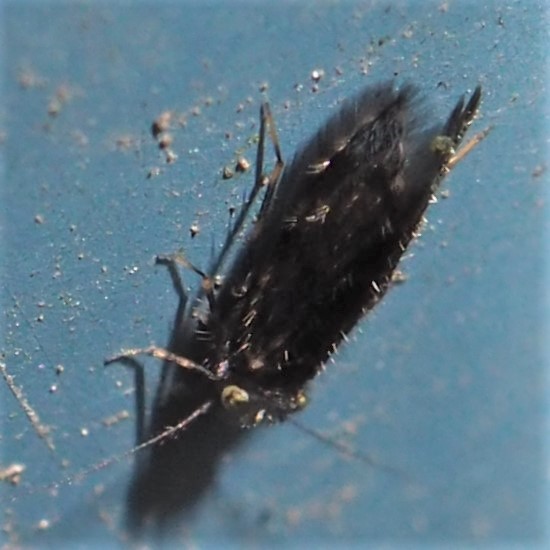

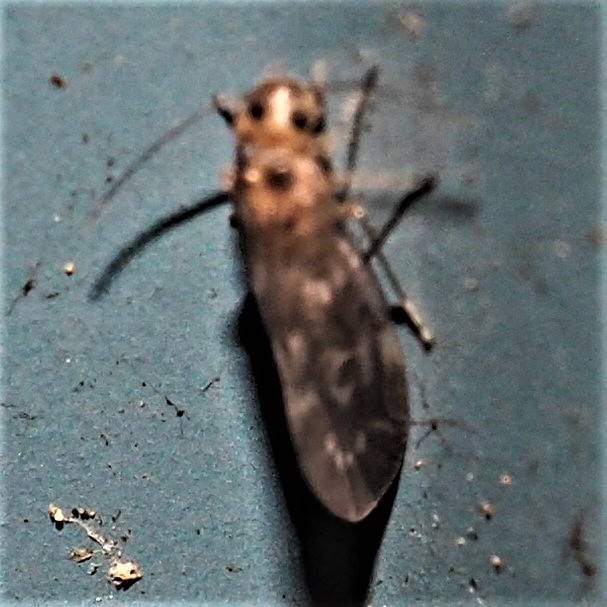
First, two pictures of a smaller nymph. And finally, another nymph that we have seen before even though we have never gotten an ID on it.
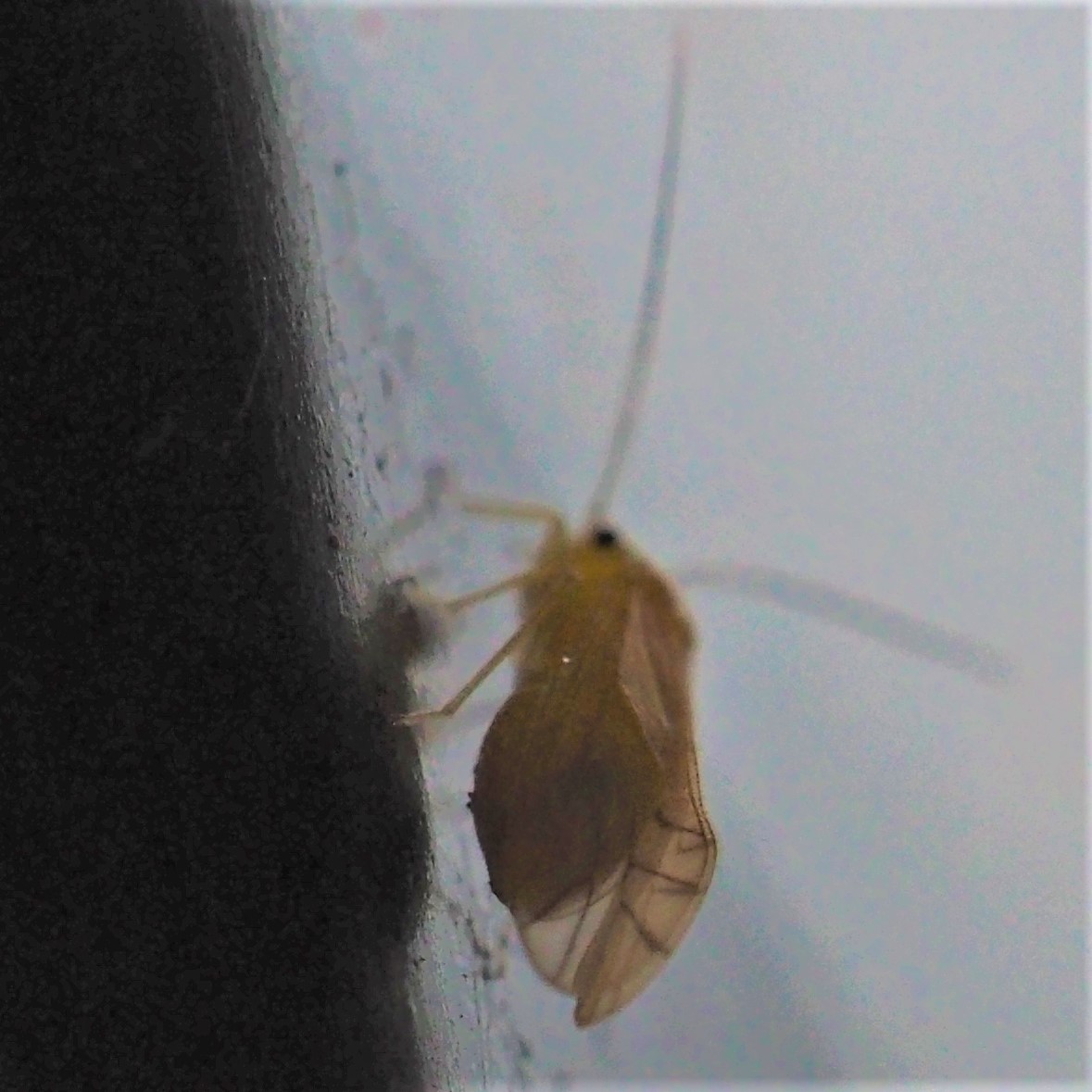


Now the Bees. First is a Pink Aster with a good-sized Bumble Bee. Next is a smaller Bumbler on a Purple Aster. Third is another unknown Bumble Bee, about the size of Bee #2.



First, the cutest of the Honey Bees. The second is probably a Bicolored Striped Sweat Bee (Agapostemon virescens). I love those shiny little bees. The third one may be a Sweat Bee of the genus Lasioglossum.
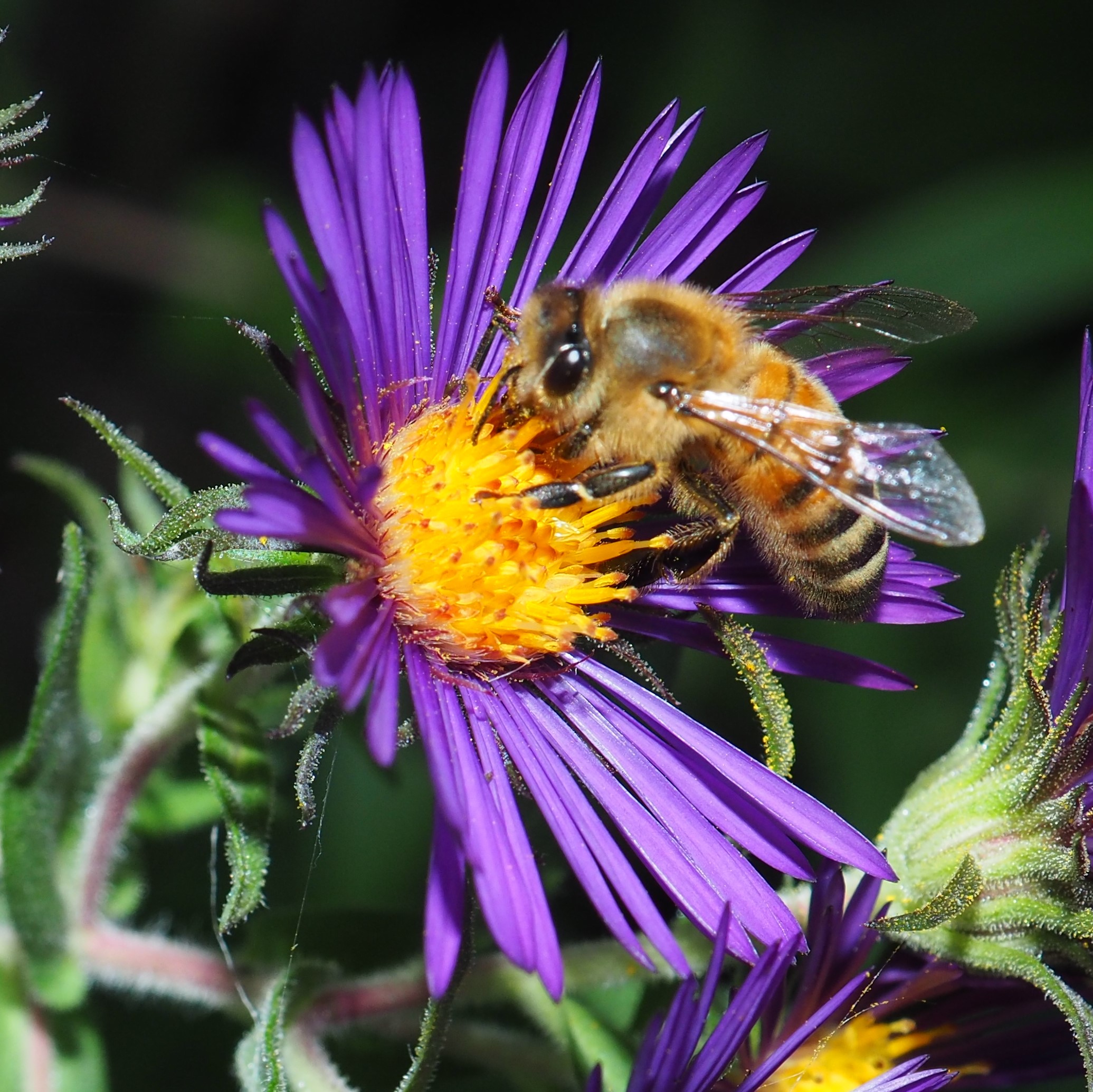
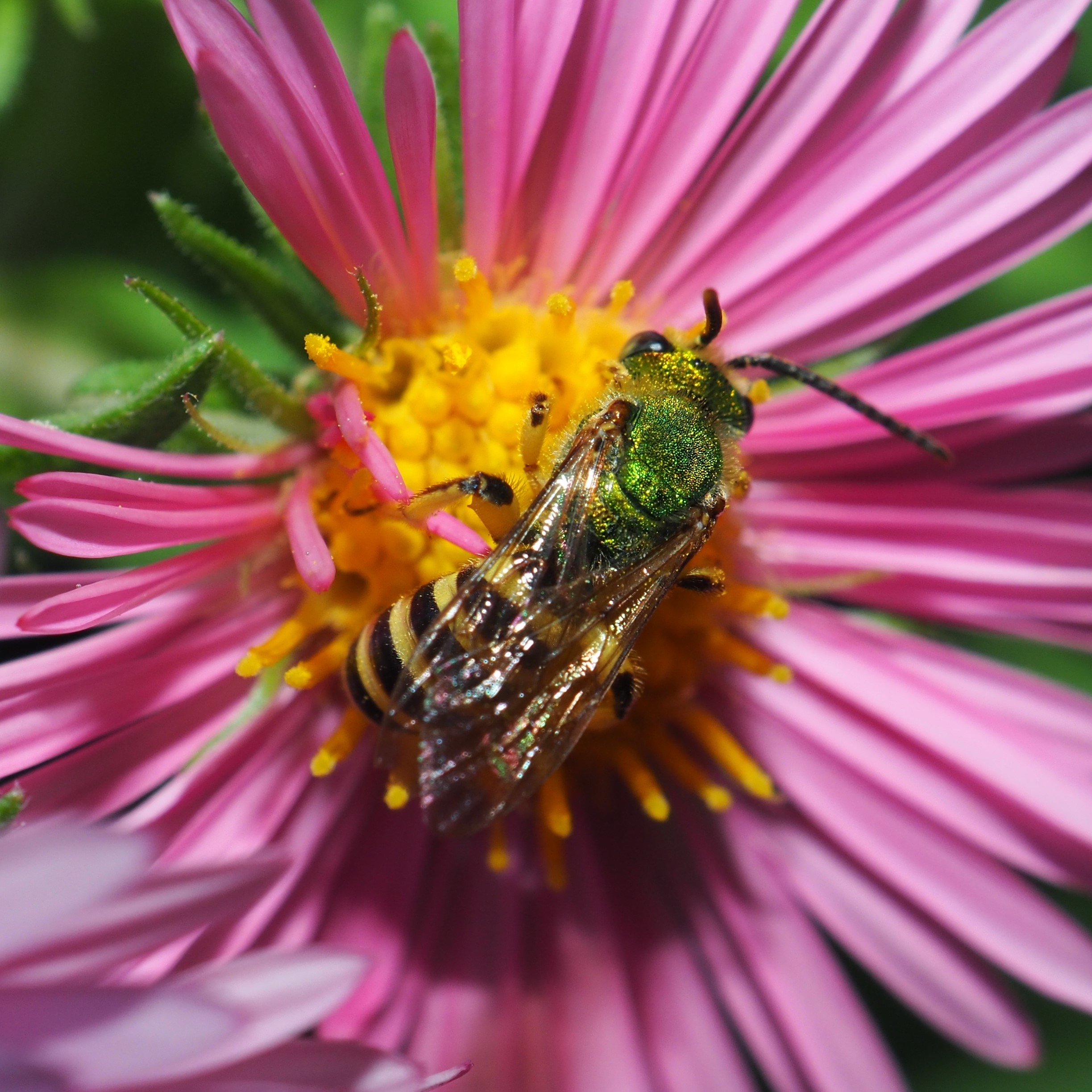
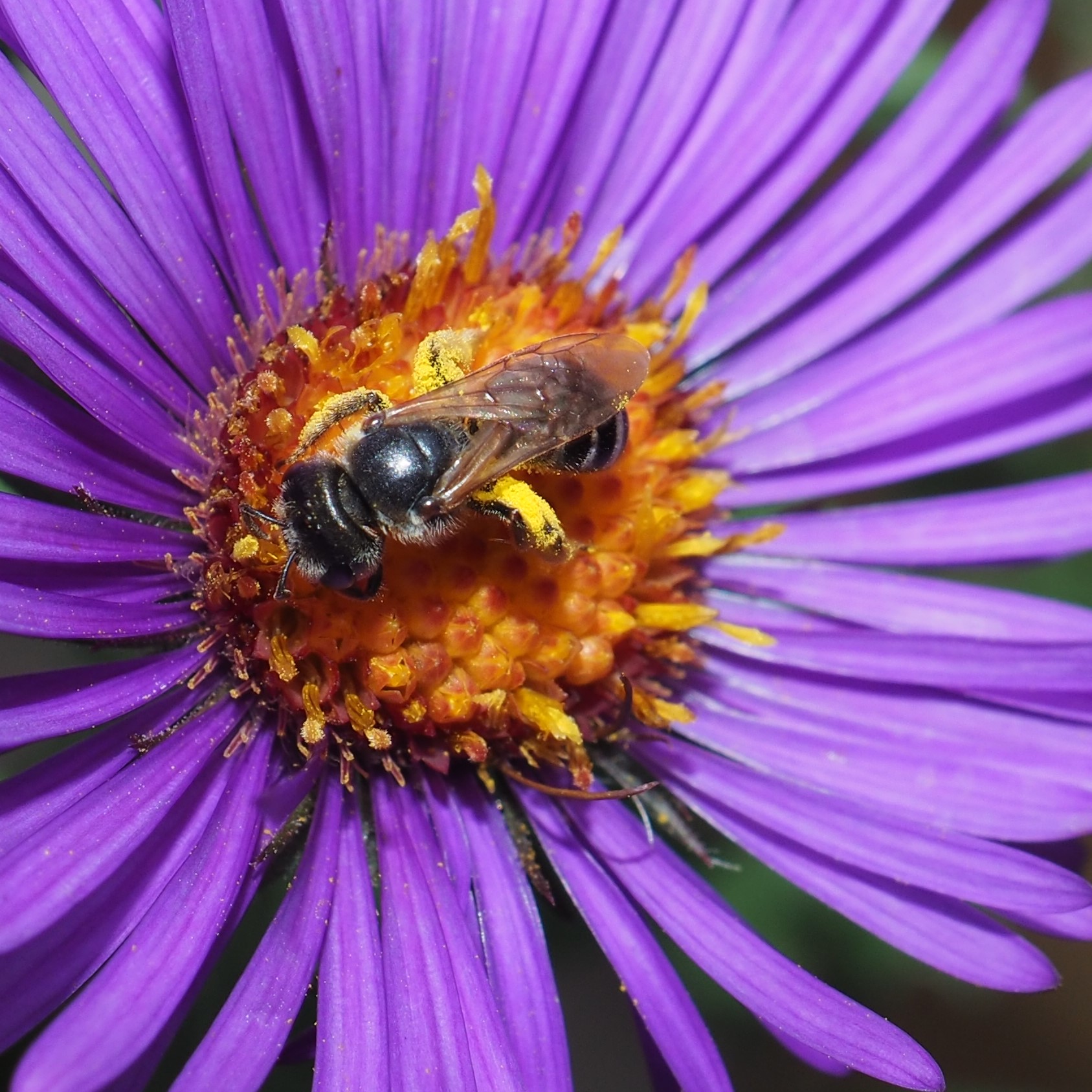
First, a LITTLE bee on a purple aster. Second, a bigger picture of another small bee on a lock of goldenrod. Look at all the yellow pollen it is covered with!
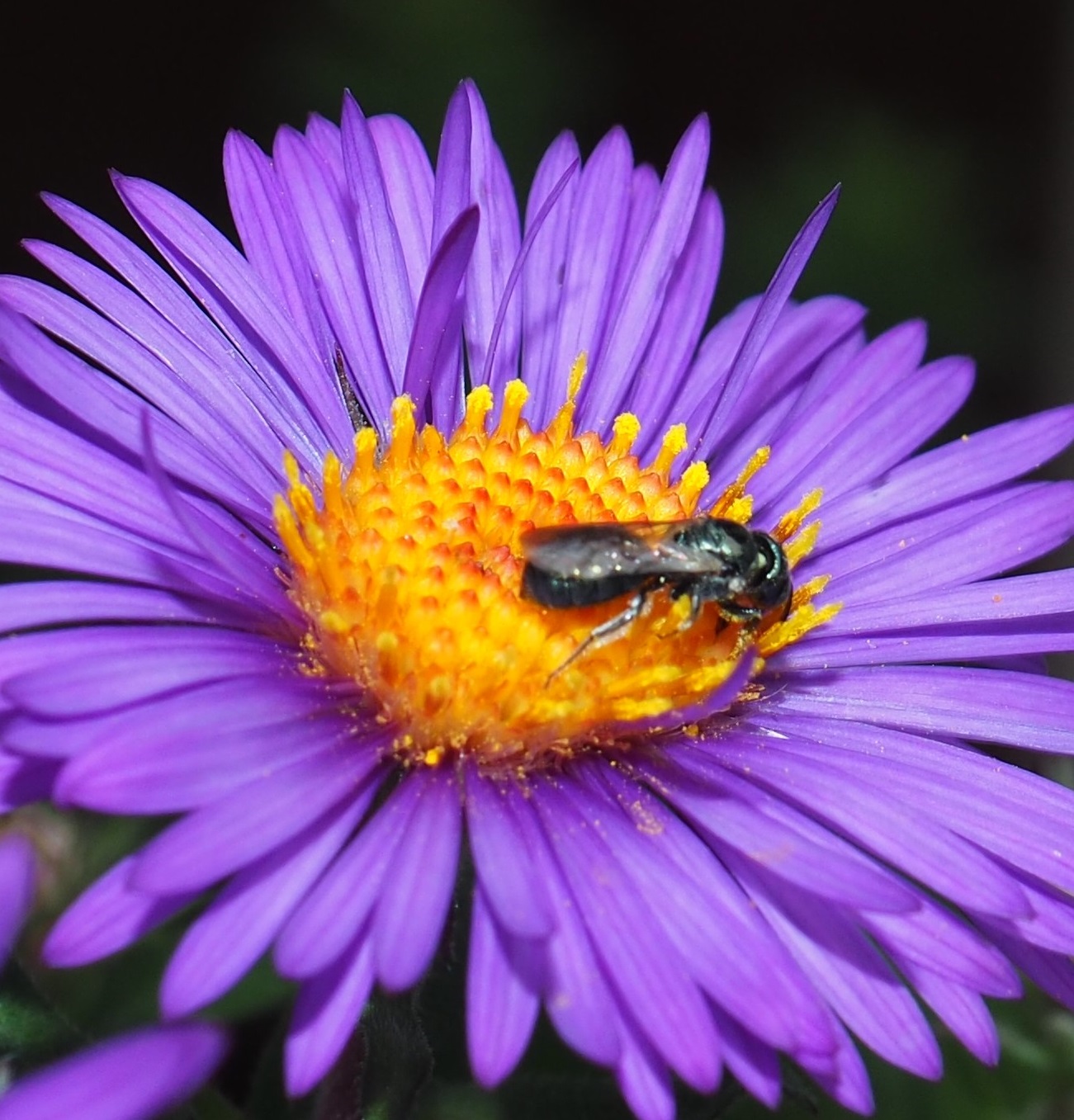

This first Beetle is a Spotted Cucumber Beetle in the Goldenrod. The second is probably a Leaf Beetle of genus Paria. Third is another black beetle with pinkish markings. How about that for coincidence? They weren't far from each other on the shop wall. But they aren't very closely related. For instance, look at their antennae. Number 2 has straight antennae, while number 3 has clubs on its antennae. Last is the Goldenrod Soldier Beetle. And that seems to have been the Beetles for this week.

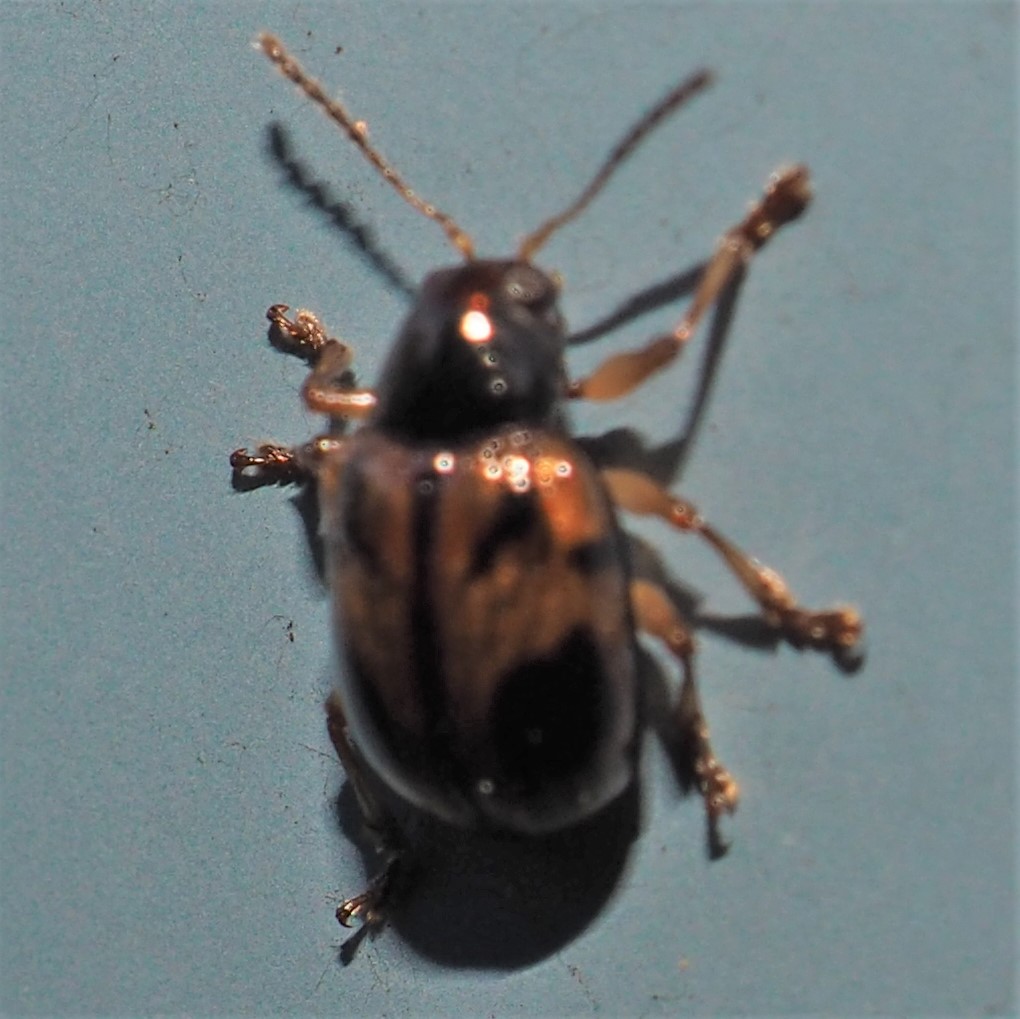
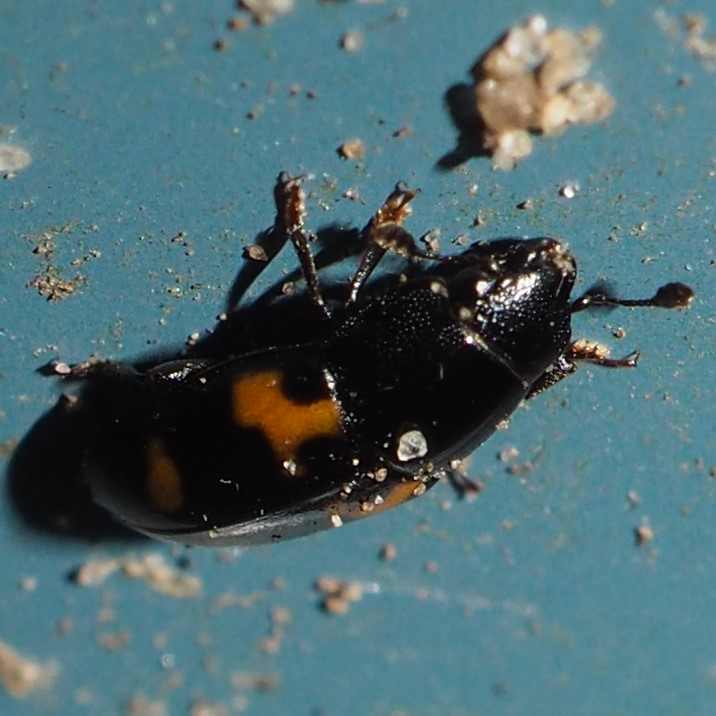
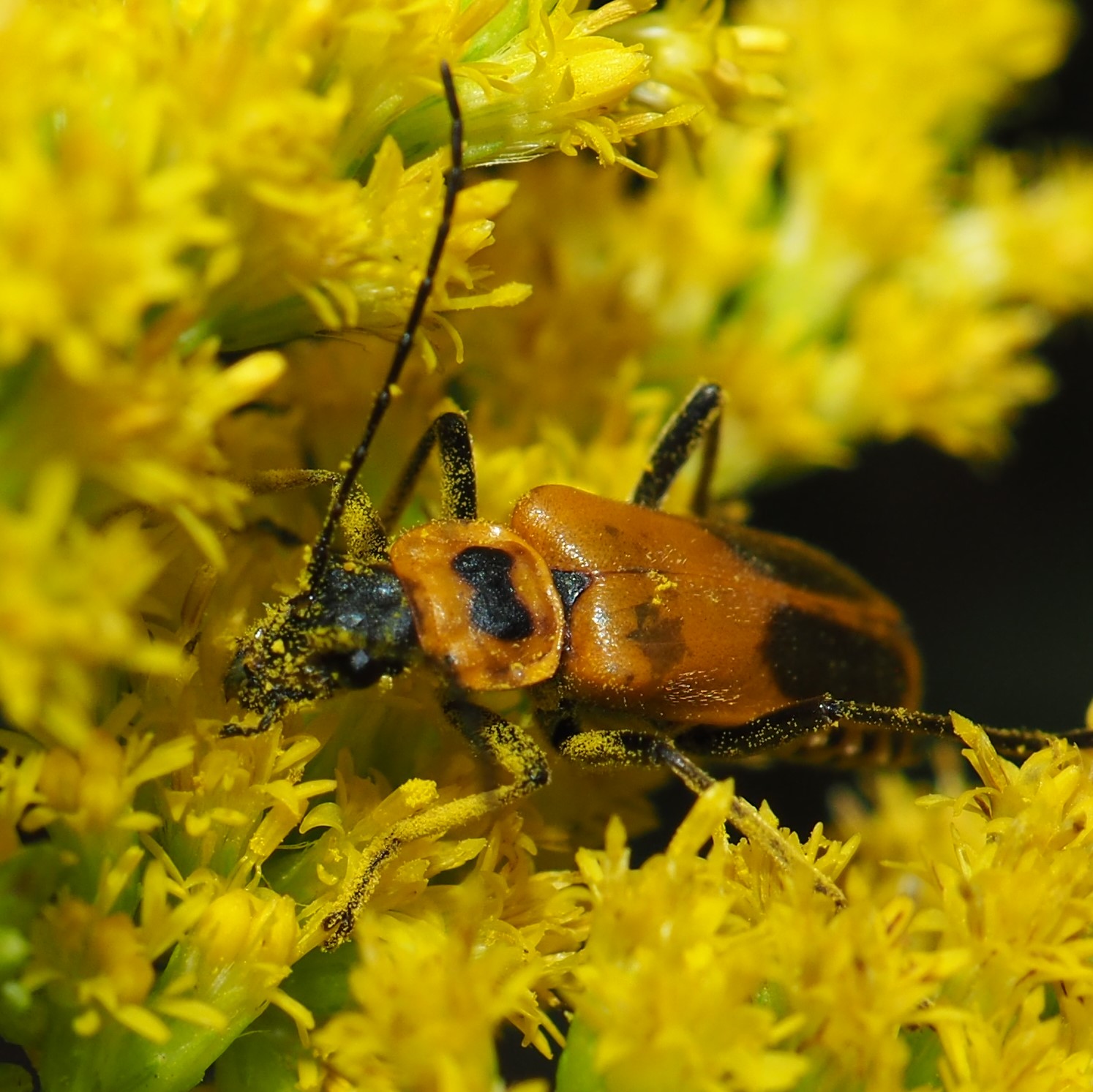
Which brings us to the Bugs. First is one of the Leaf-footed Bugs, Anthocephala terminalis. There does seem to be a leaf-shaped ornament on its back legs. This one was just trying to disappear over the brick edge of the porch wall. Next, probably a Squash Bug, but I couldn't match it with any of the photos in iNat. Last is, of course, one of those BMSB (Brown Marmorated Stink Bugs) that everyone loves to hate.
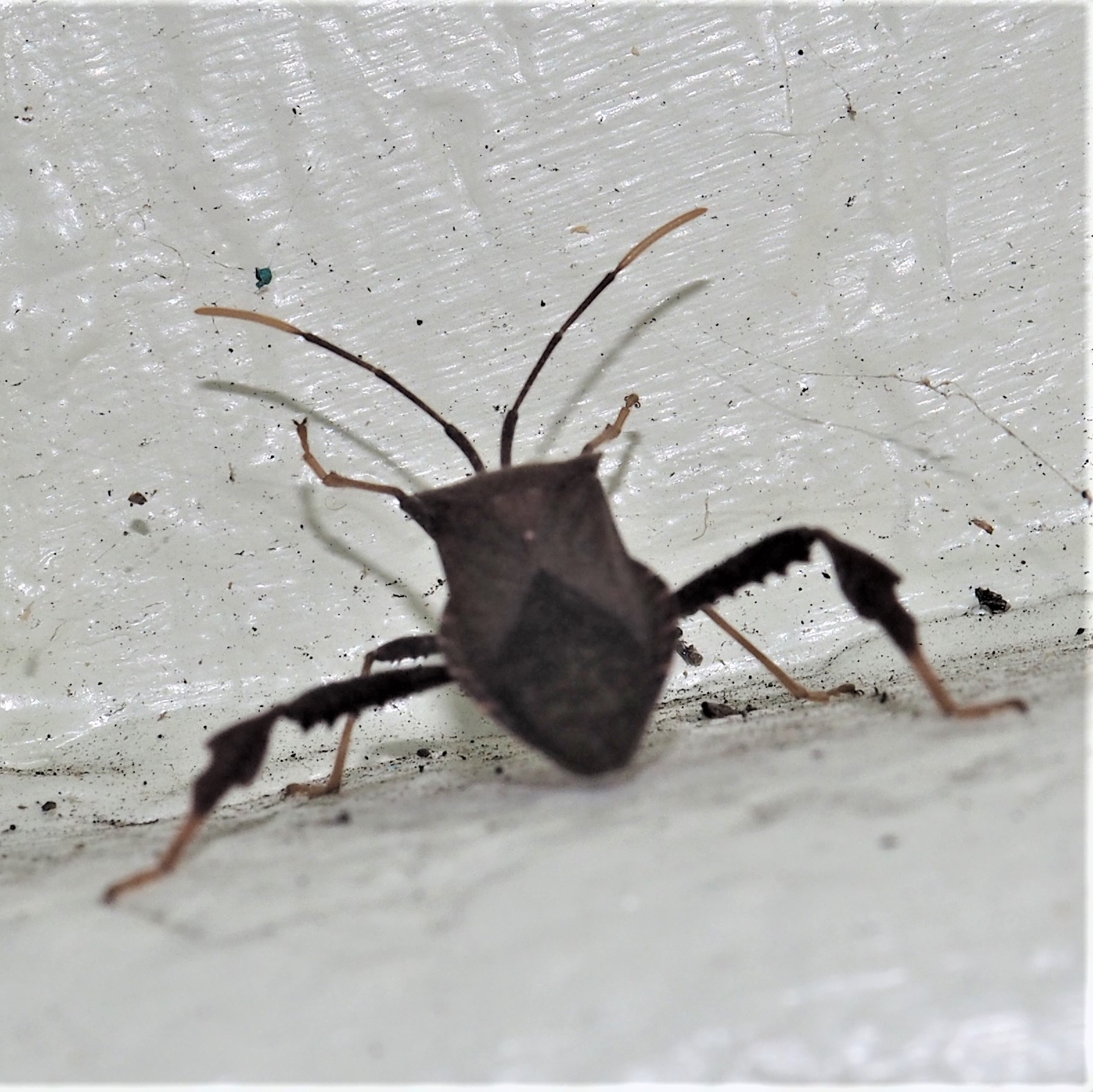



We did see a fair collection of Leafhoppers. Many of them were hard to distinguish because of their mottled appearance, like this first one. And the second one. But I'll bet you recognize number 3 - it was in last week's menagerie too. It's Erasmoneura vulnerata.
.

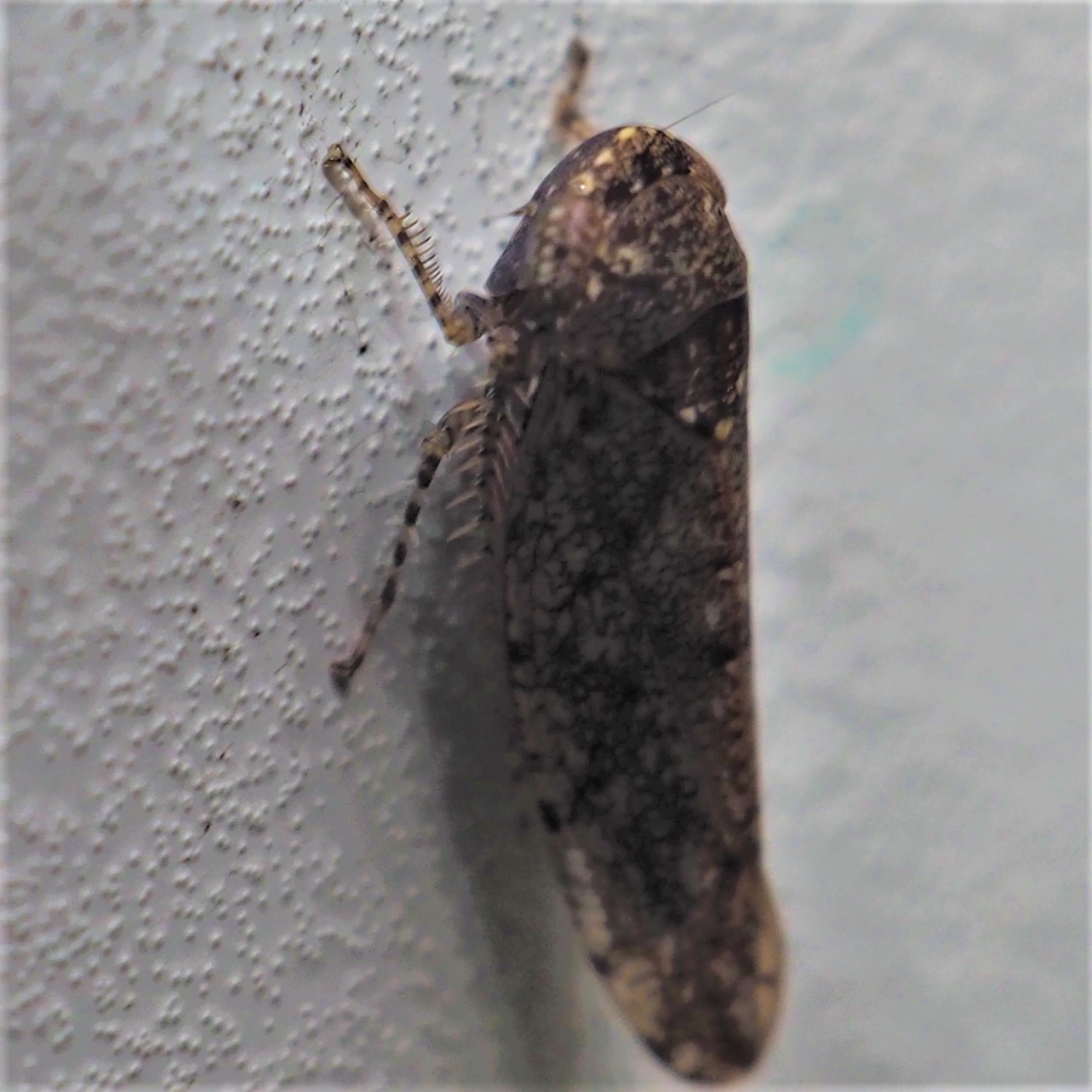
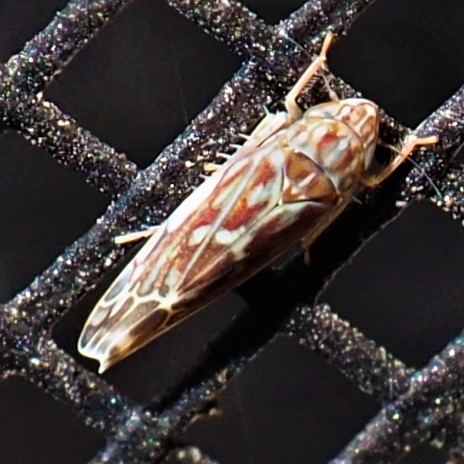
Here is a perfect example of non-focusing. I took four shots of this leafhopper but it fooled the camera each time, probably because of the ambiguous markings. The second bug was a leafhopper and probably a new one but it seemed to have been at least partially immobilized by a spider. Pictures 3 and 4 are of a PLANThopper, not a Leafhopper. They are more compact for one thing. I don't see a lot of Planthoppers for some reason. Why? Well, for one thing, if this little guy is any example, they may be more inconspicuous.
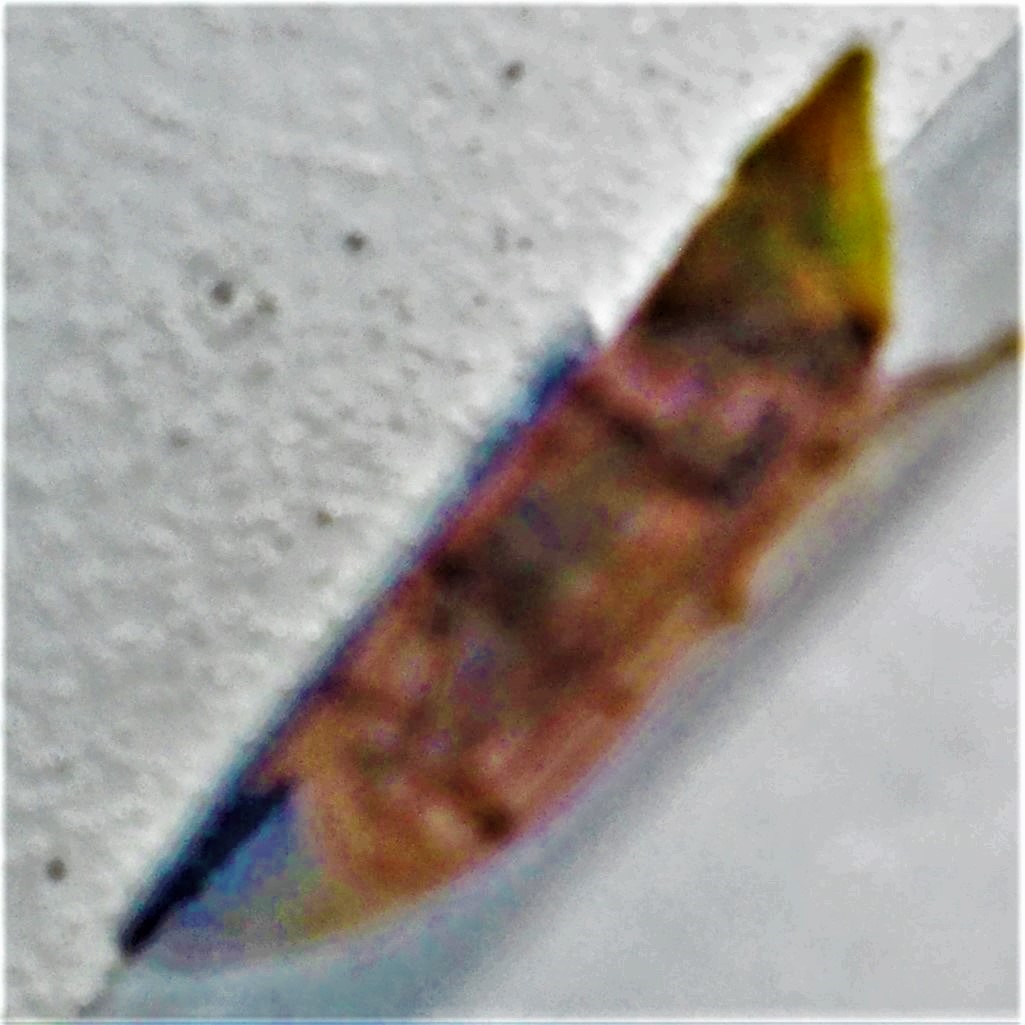
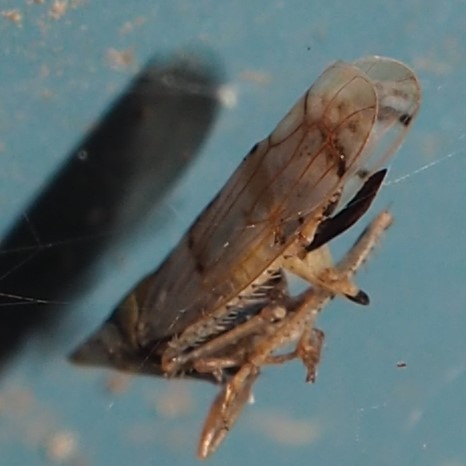
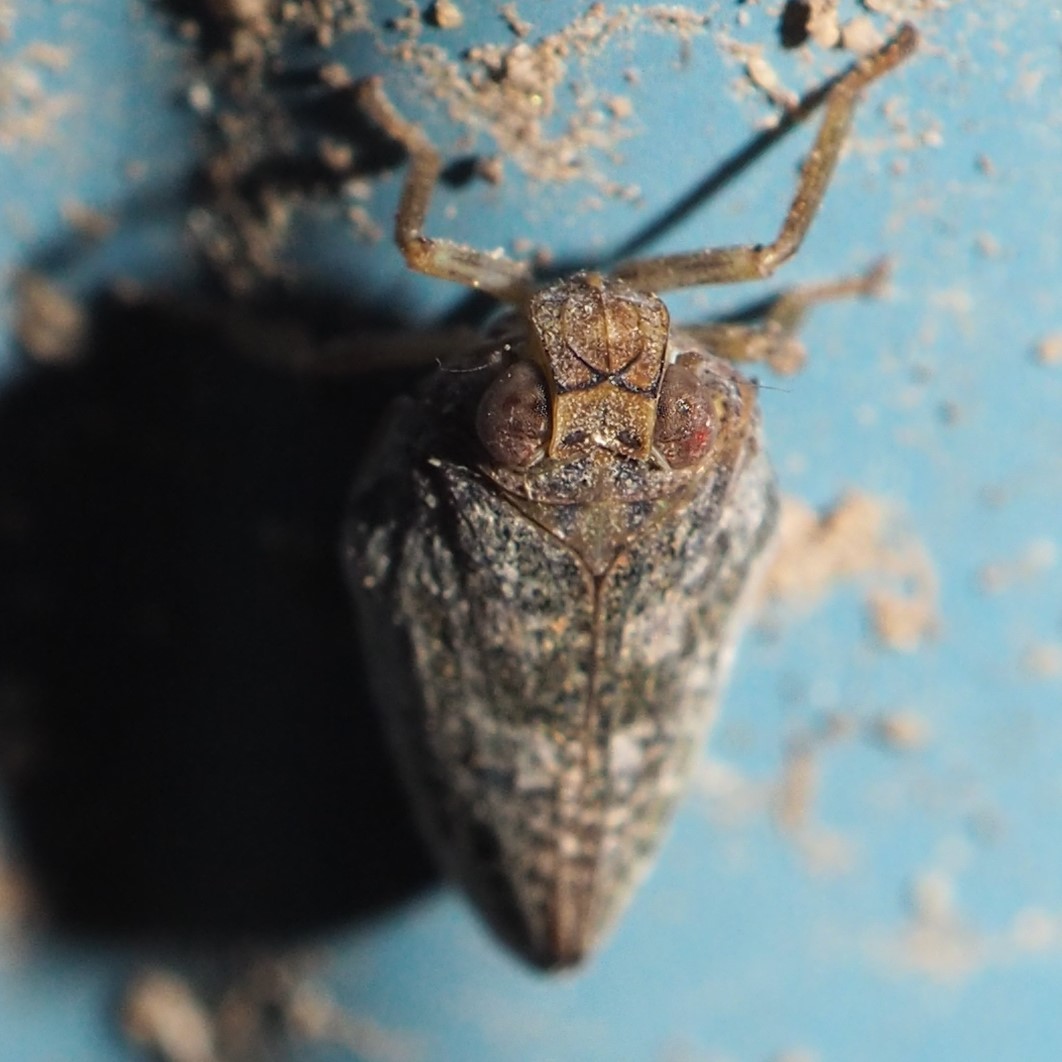
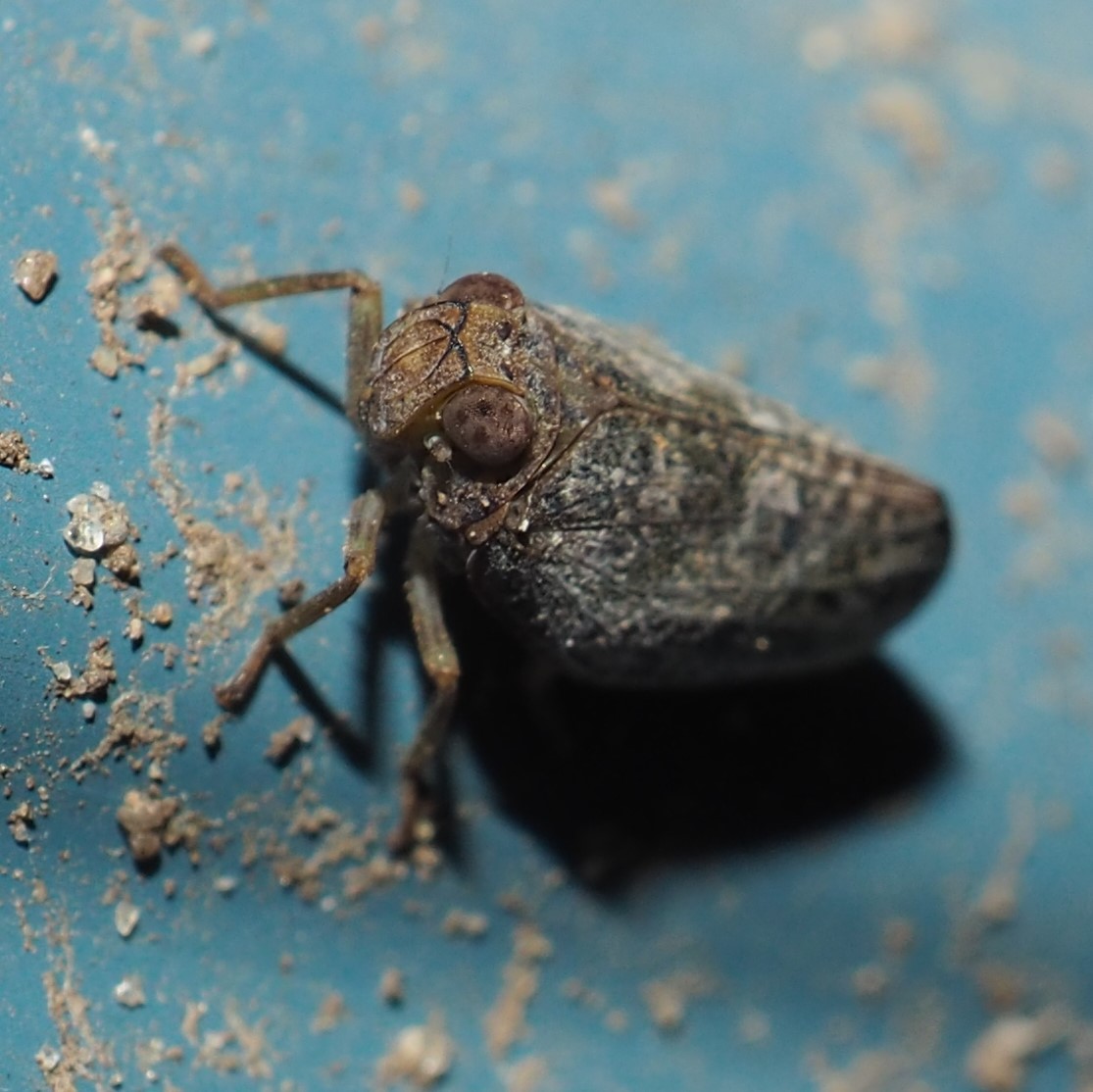
The asters are now bringing in Butterflies. Here are an American Beauty, related to the Red Admiral we've seen once in a while; the Grey Hairstreak that we have seen a couple of times lately; and a Cabbage White, which is extremely plentiful about now. They flutter with each other for hours.

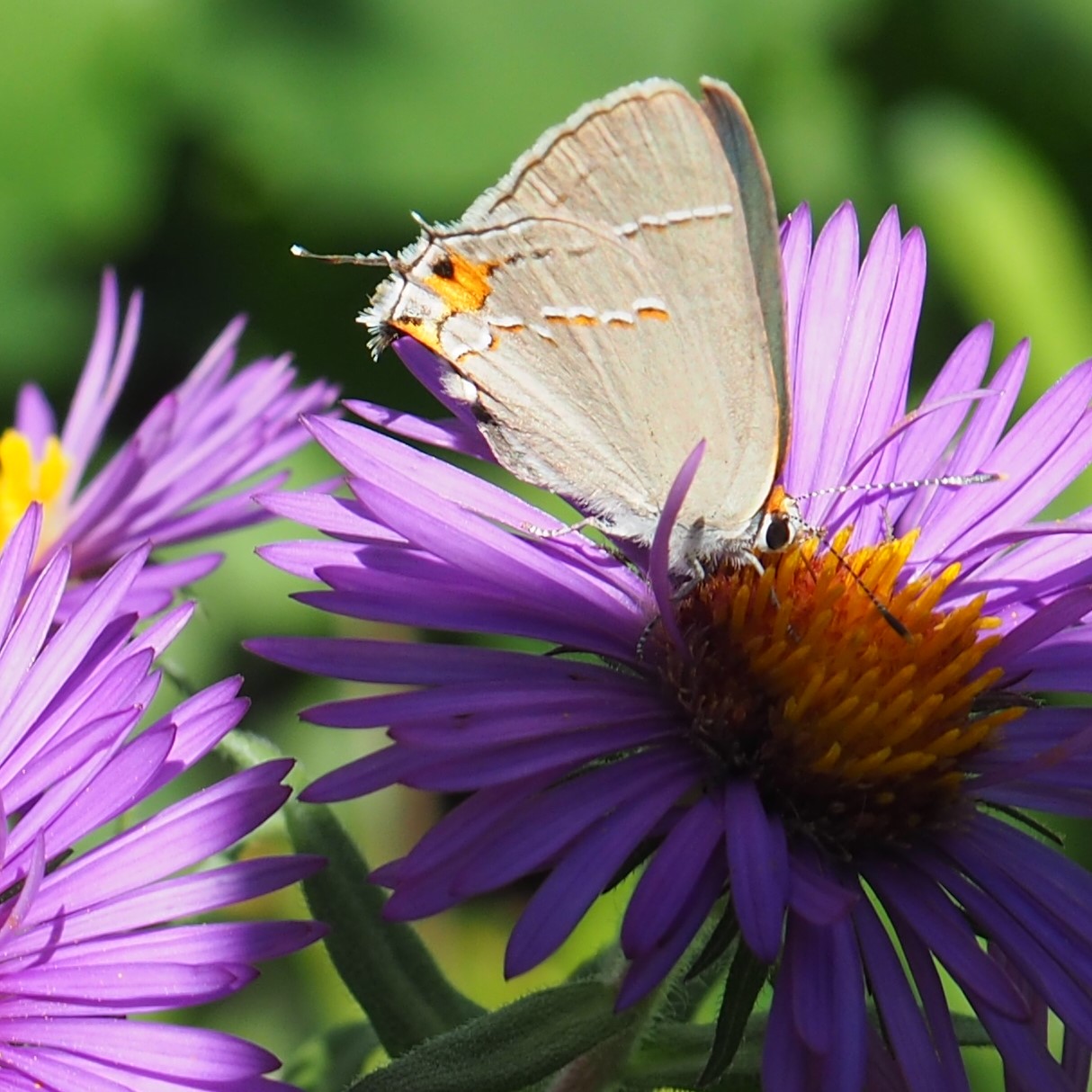
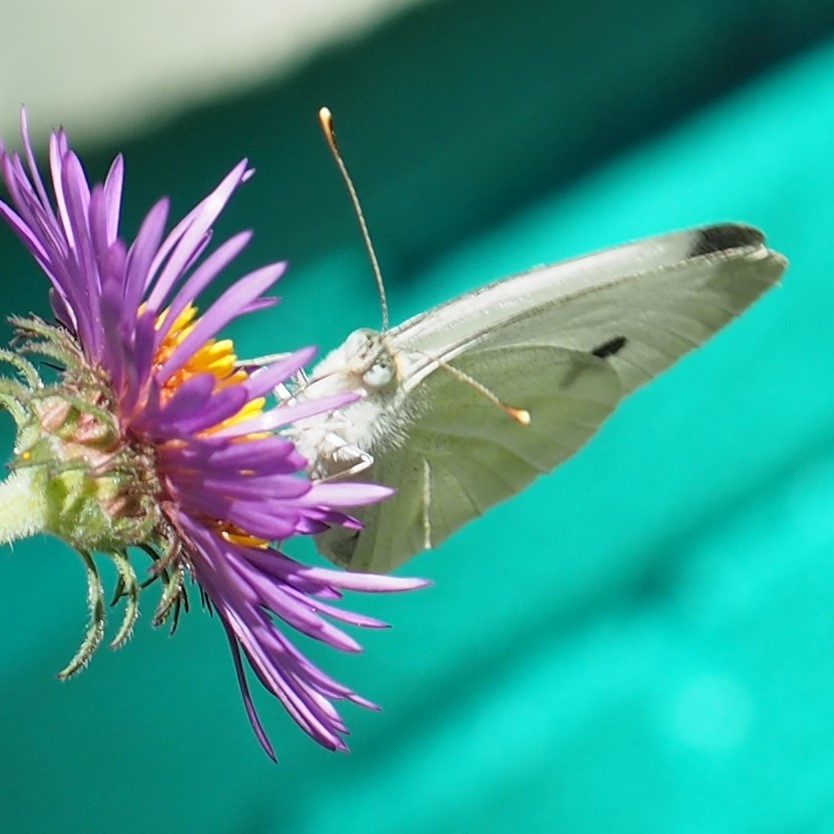
The Clouded Yellows are still here too. I watched patiently to see it open its wings, as it is almost impossible to get a good ID from the outside. Finally I got this dreadful picture. I'm almost sure this shows that this is an Orange Sulphur. I did the same watching and waiting for the butterfly in the third picture to open its wings. When it did, it flashed an almost white inside. From what I've read, it seems that some of these butterflies are white and some yellow inside.

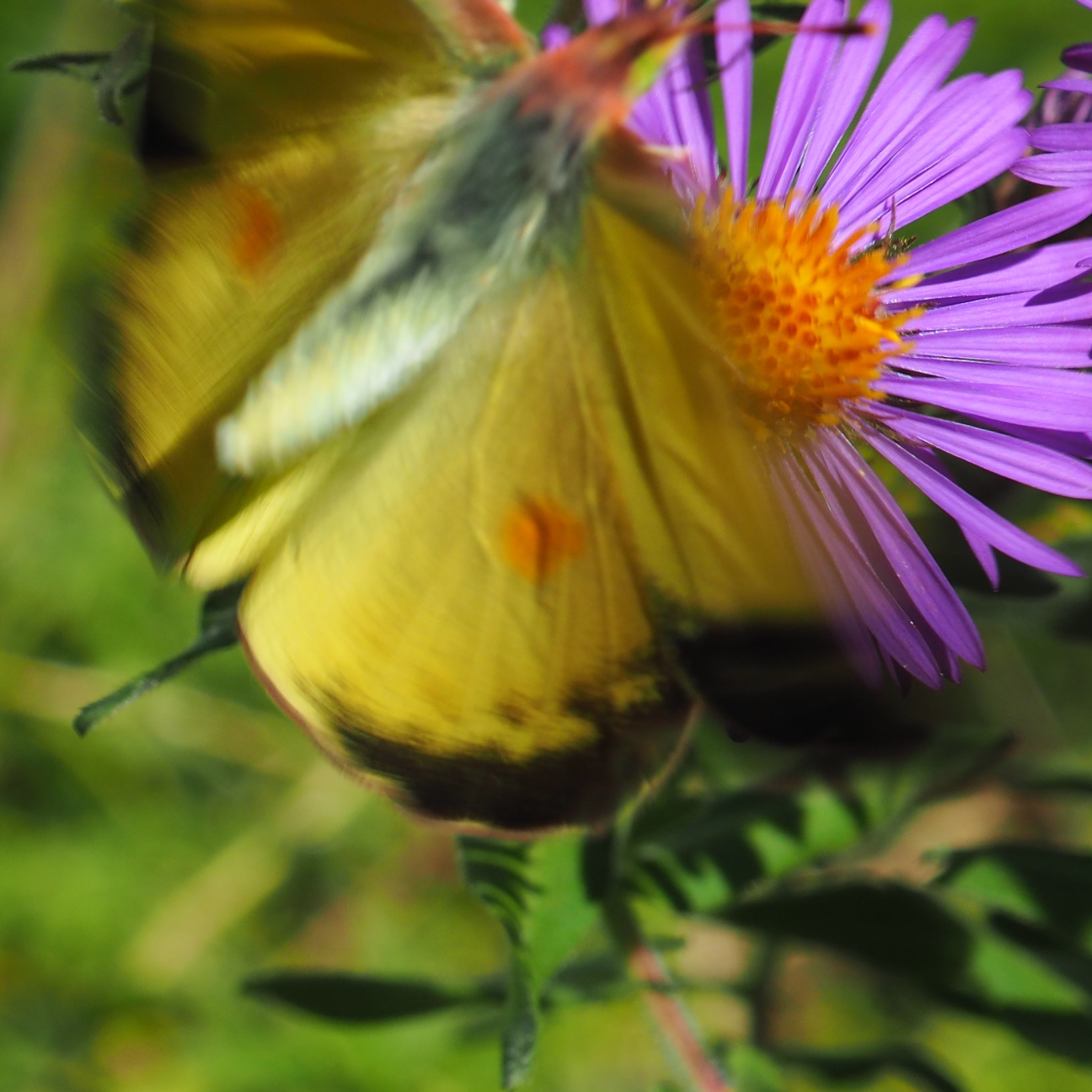
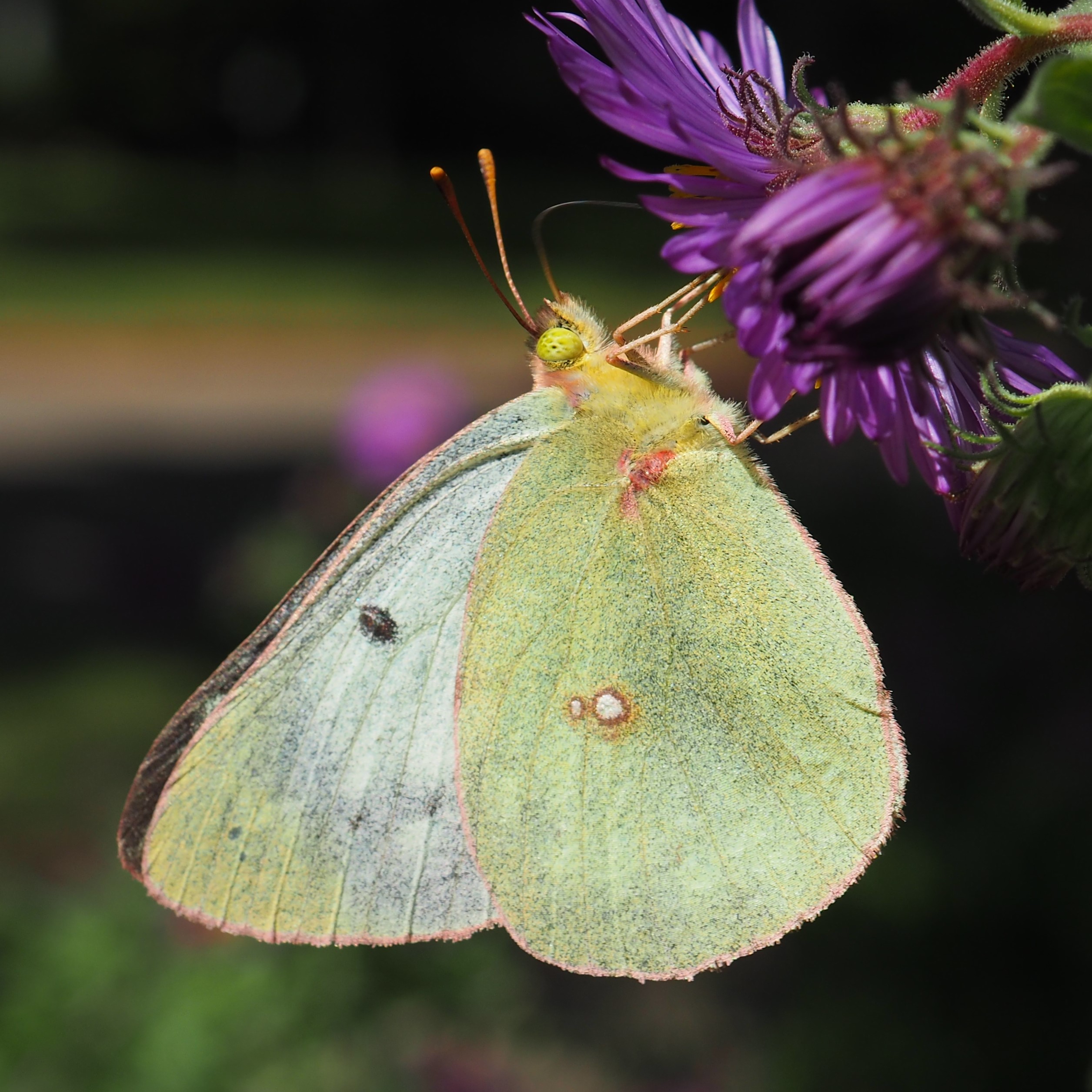
This little skipper is the Checkered Skipper, very common this time of year.
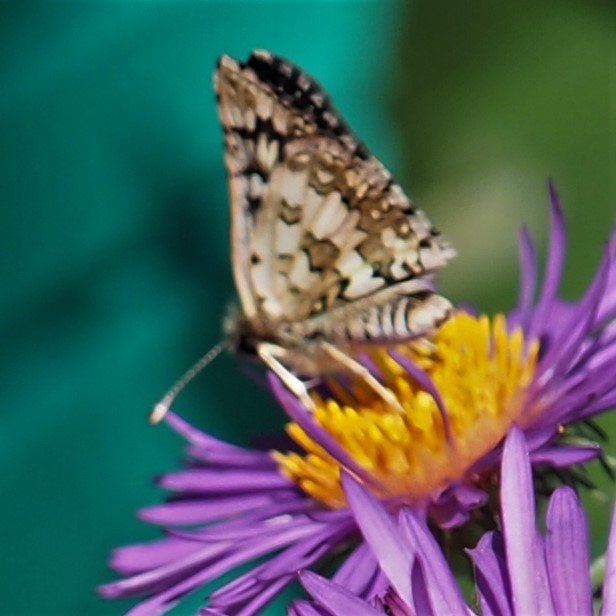
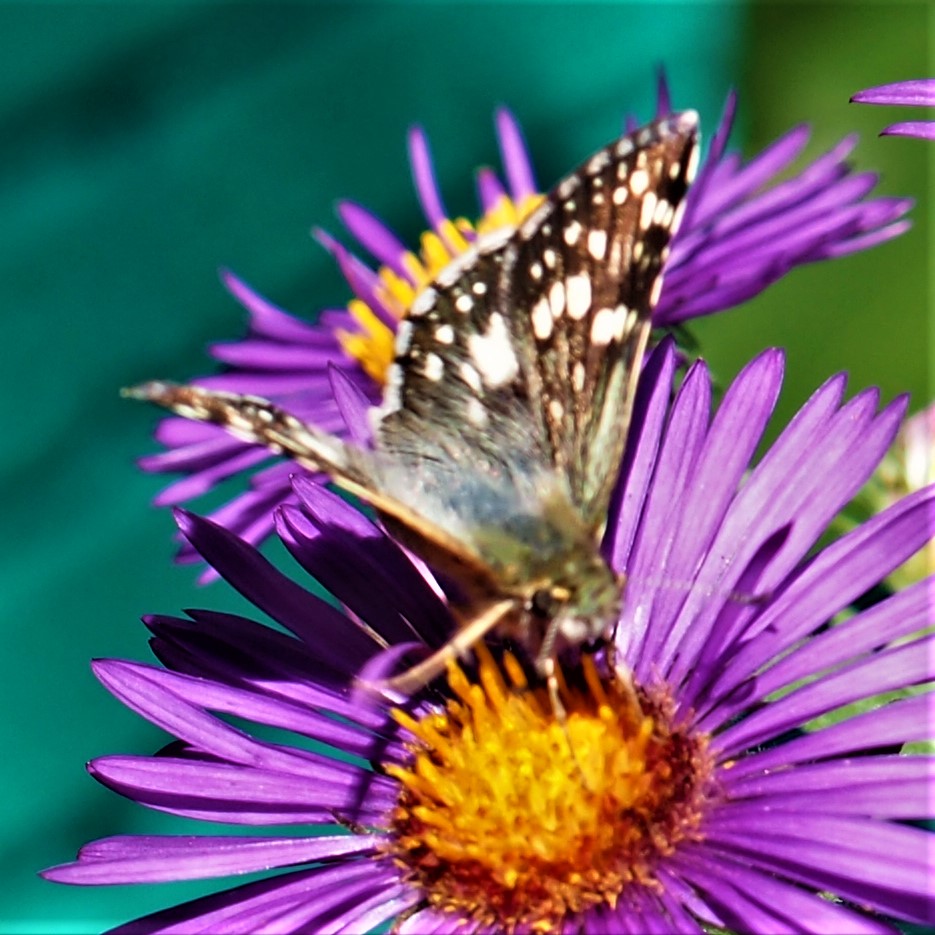
Here is the Skullcap Skeletonizer Moth. I don't even know what a Skullcap is, but it must be some kind of plant with leaves to skeletonize. Next is the Ailanthus Webworm Moth, that lovely lover of Goldenrod.


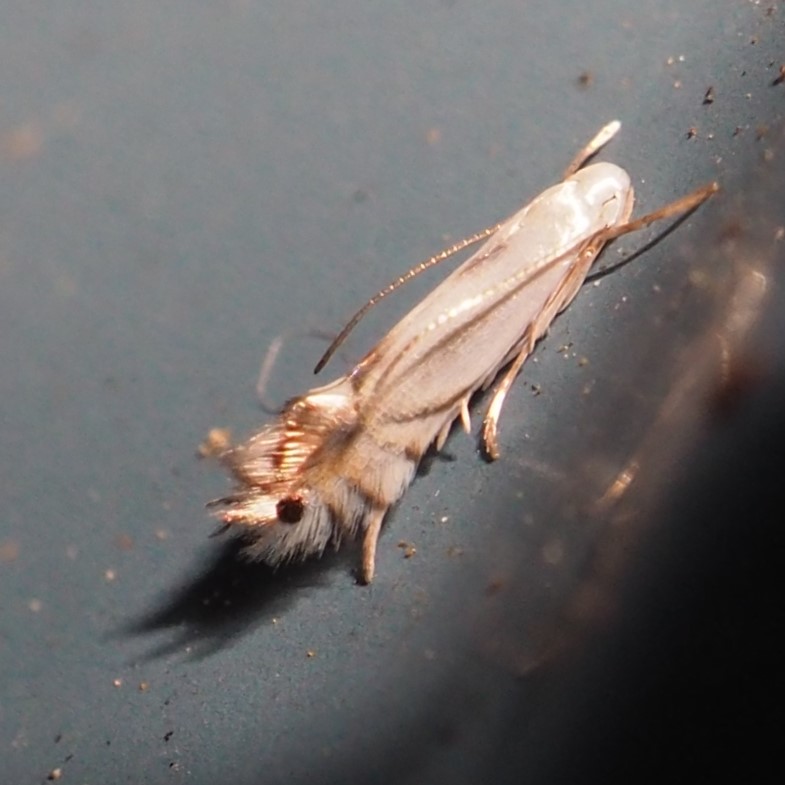
This is the Yellow-necked Scape Moth.
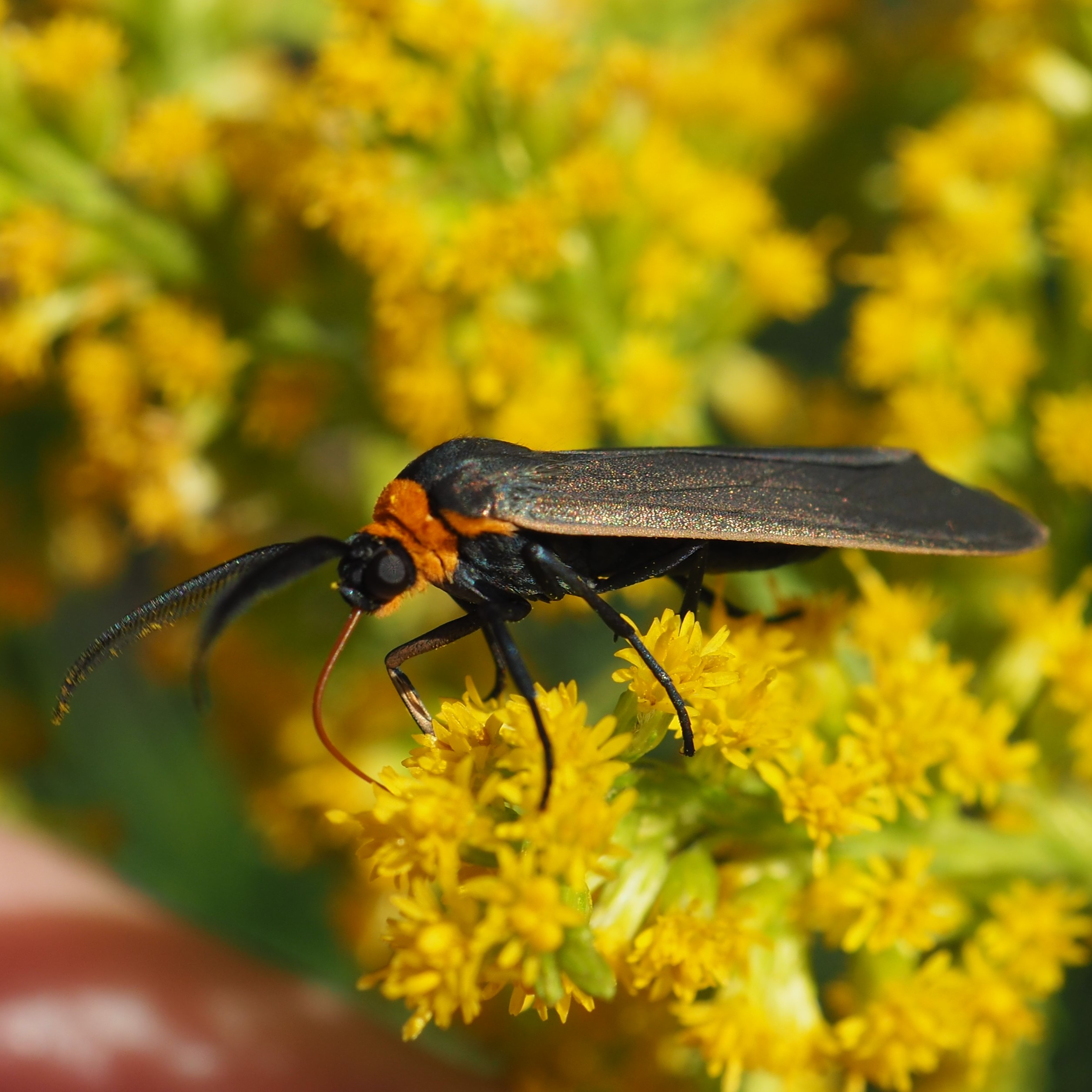
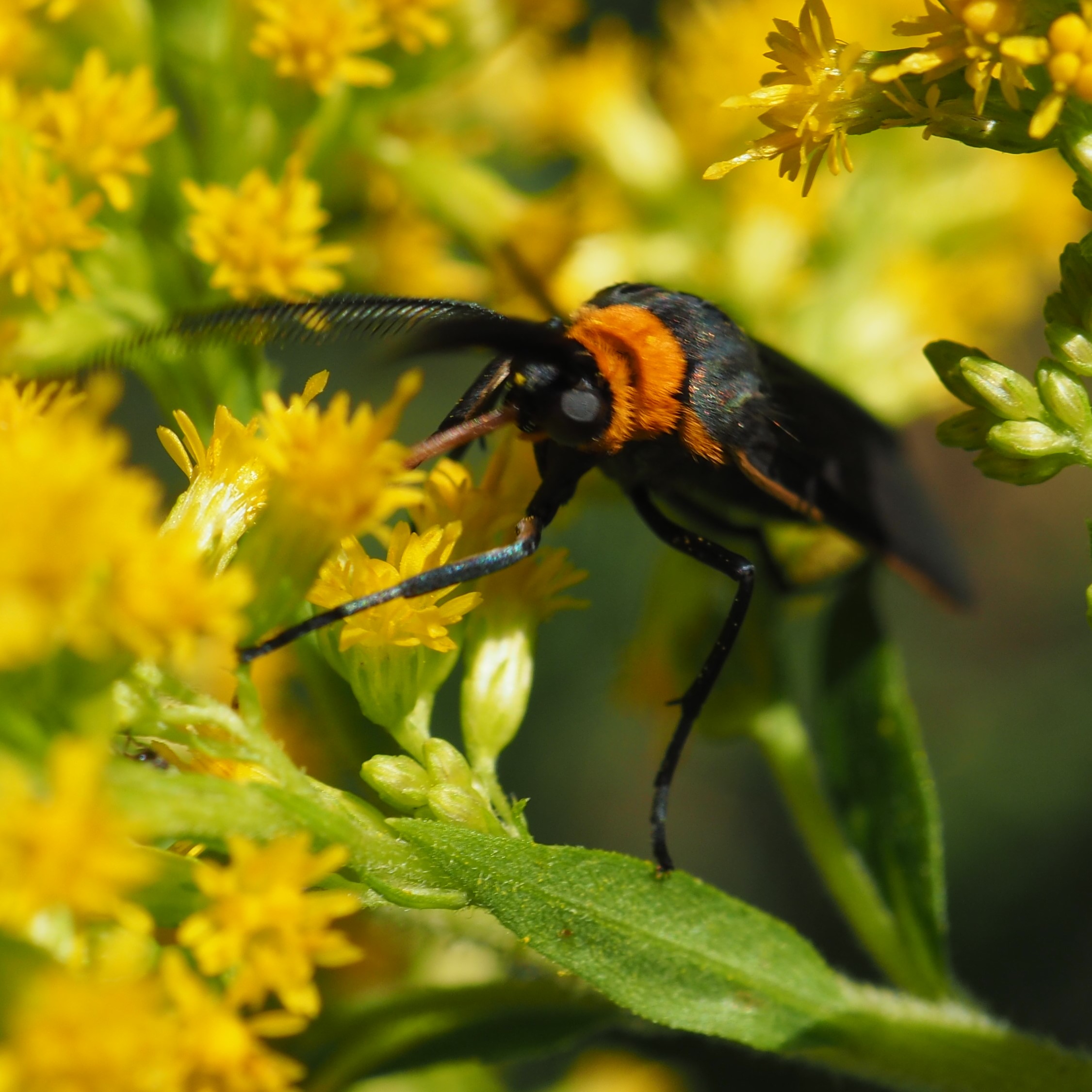
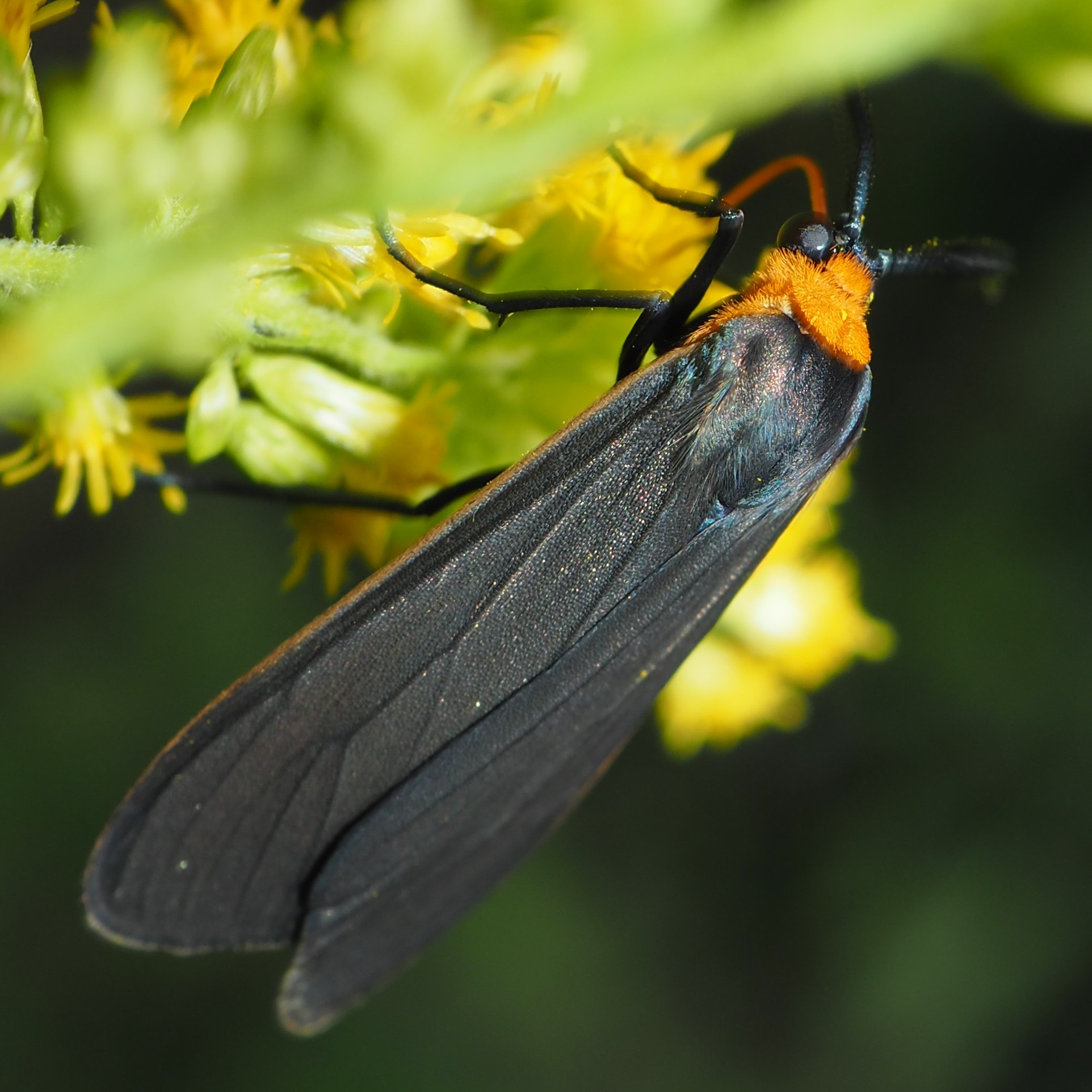
This grey tussock moth is the Banded Tussock Moth. Wonder what the gunk is in its "fur". The second one was guessed at as "Tribe Phycitini" in the ID app of iNat, but Kimberlie Sasan suggested "Lucerne Moth". She's usually right!


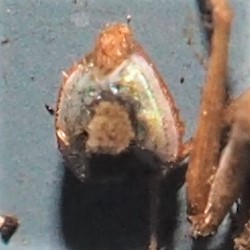
While we're in Butterflies and Moths, here are a couple of caterpillars. This first Looper was on the shop siding. The second was on the ground. Third is a Centipede or Millipede, so fits in about alphabetically, even though it is not a kind of caterpillar! It seems to have two pairs of legs per segment, so will be a Millipede. I'm lousy at counting the legs though...
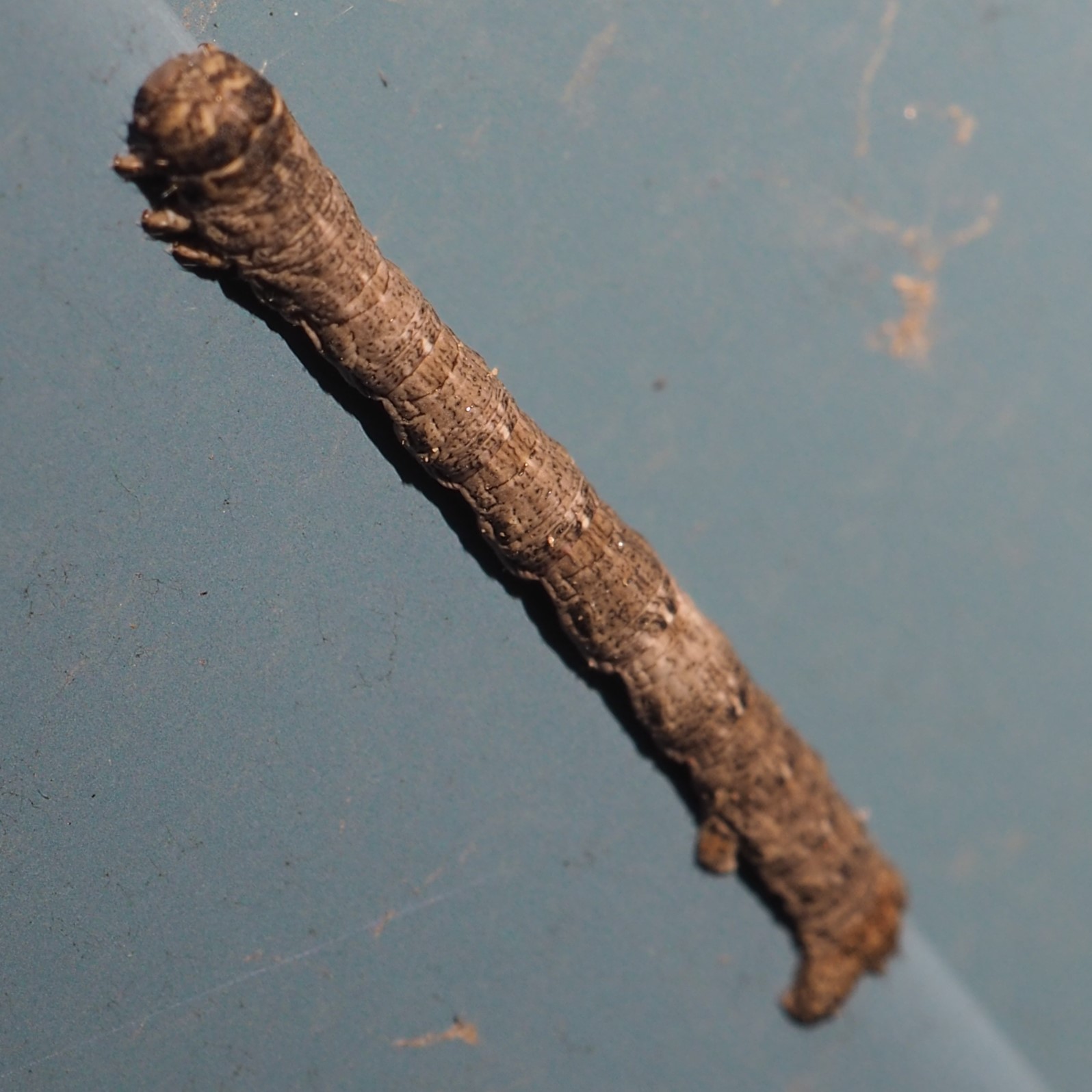

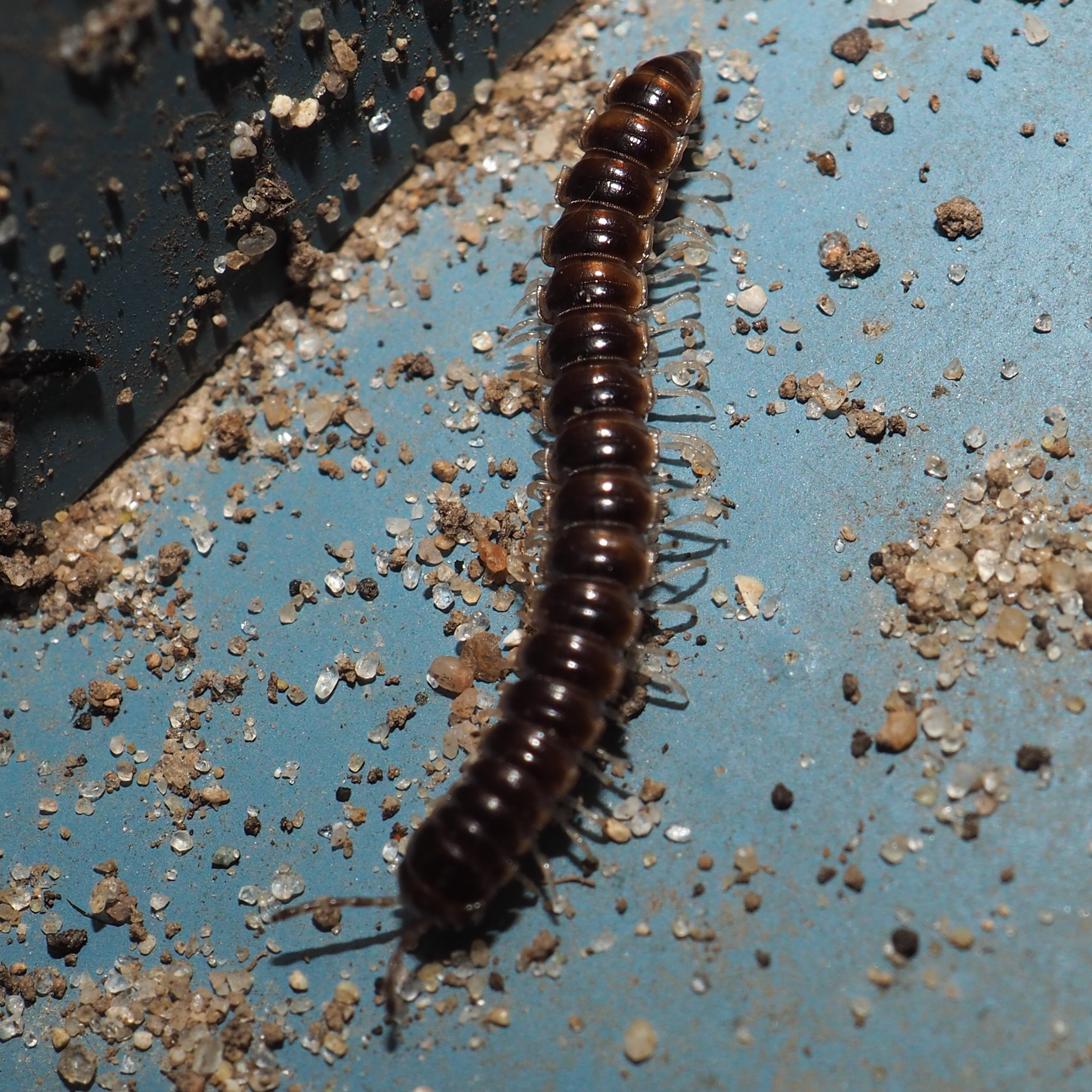
Here are some of the fishes scrambling for food. That's the white flakes floating on the water.
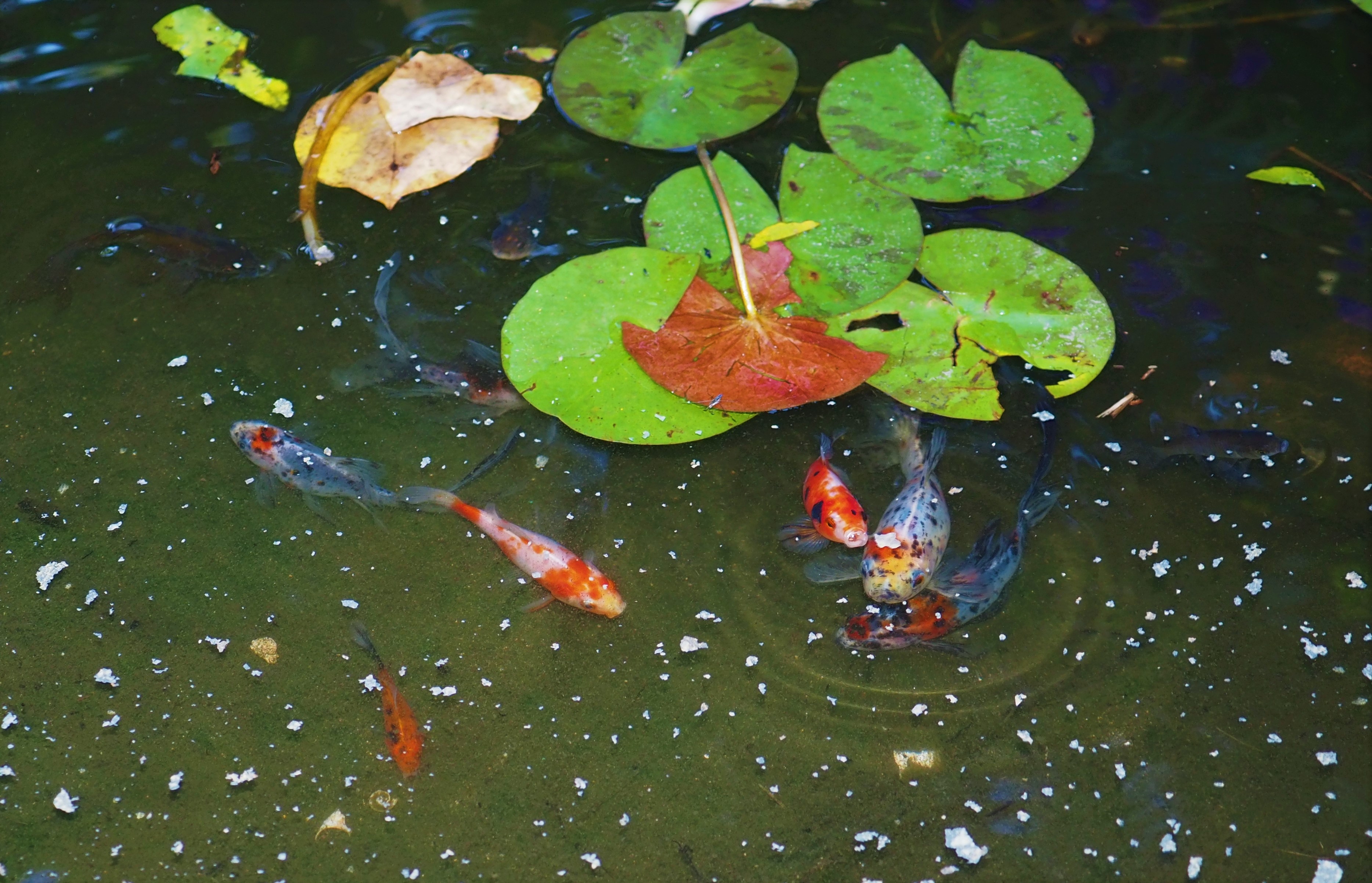
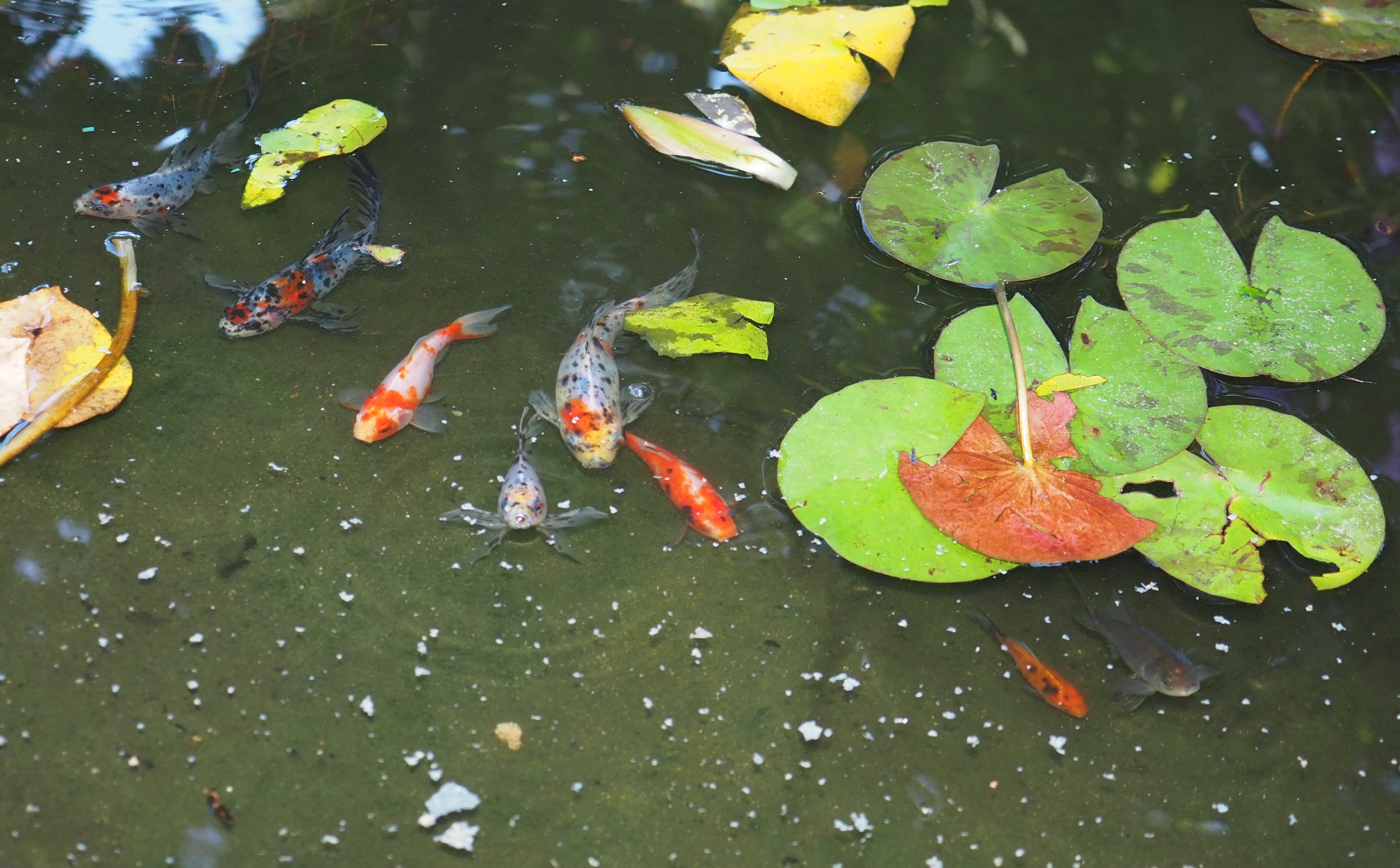
The Flies this week felt as if they were dominated by mosquitoes. But here are a Fungus Gnat, a Gall Midge, and a Moth Fly.

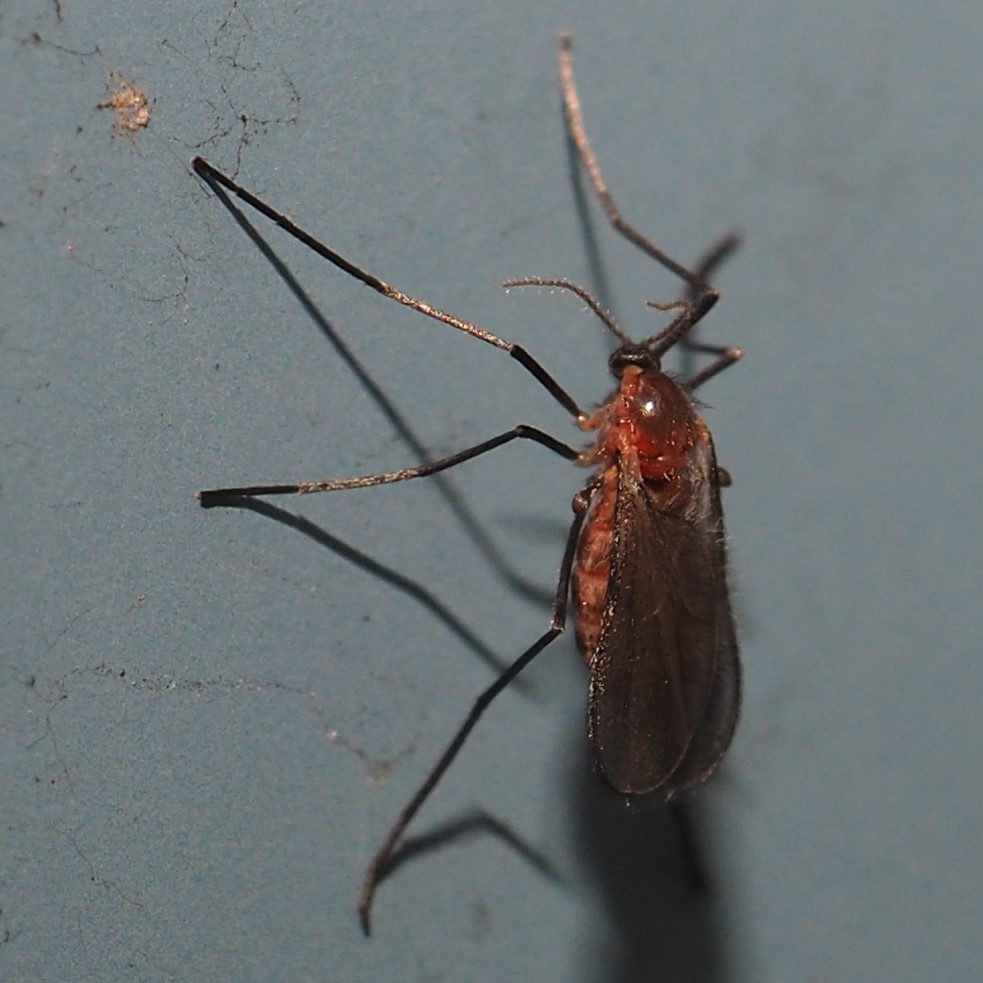

The Asters attract a lot of things that nothing else seems to attract. Here is that ever-present Hover Fly, Toxomerus geminatus. The second (and third) one may or may not also be a Hover Fly. It has the huge eyes, this time almost purple!

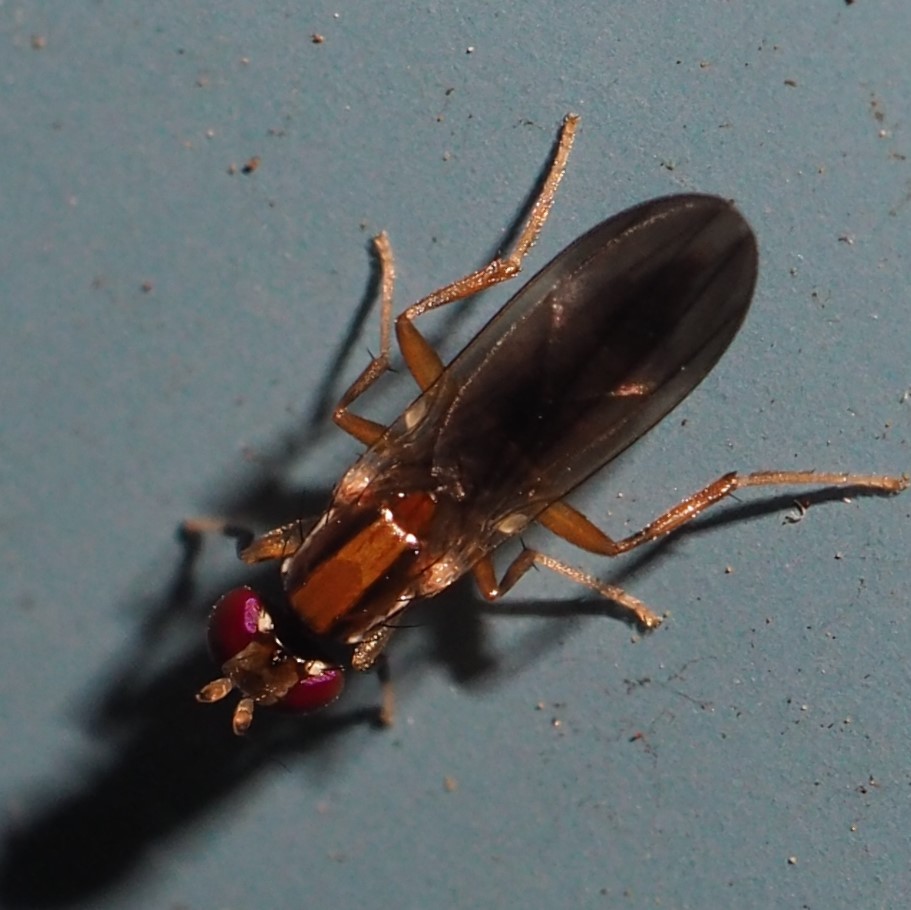
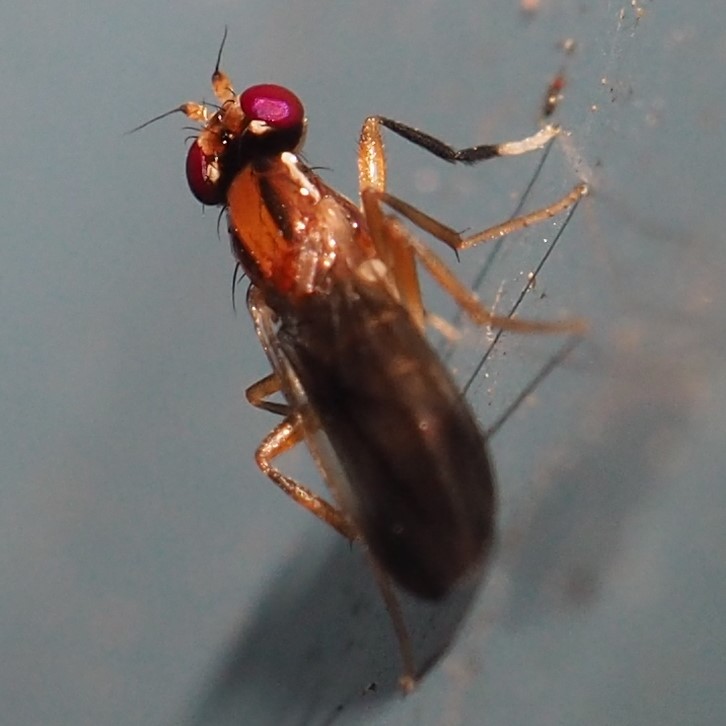
Here are the Mosquitoes high on O positive. Don't do this if you have trouble focusing but if you cross your eyes you should get two bad 3-d images. Really, don't do it. I can't not try to fuse pairs when I see them. But know your limits. OK?

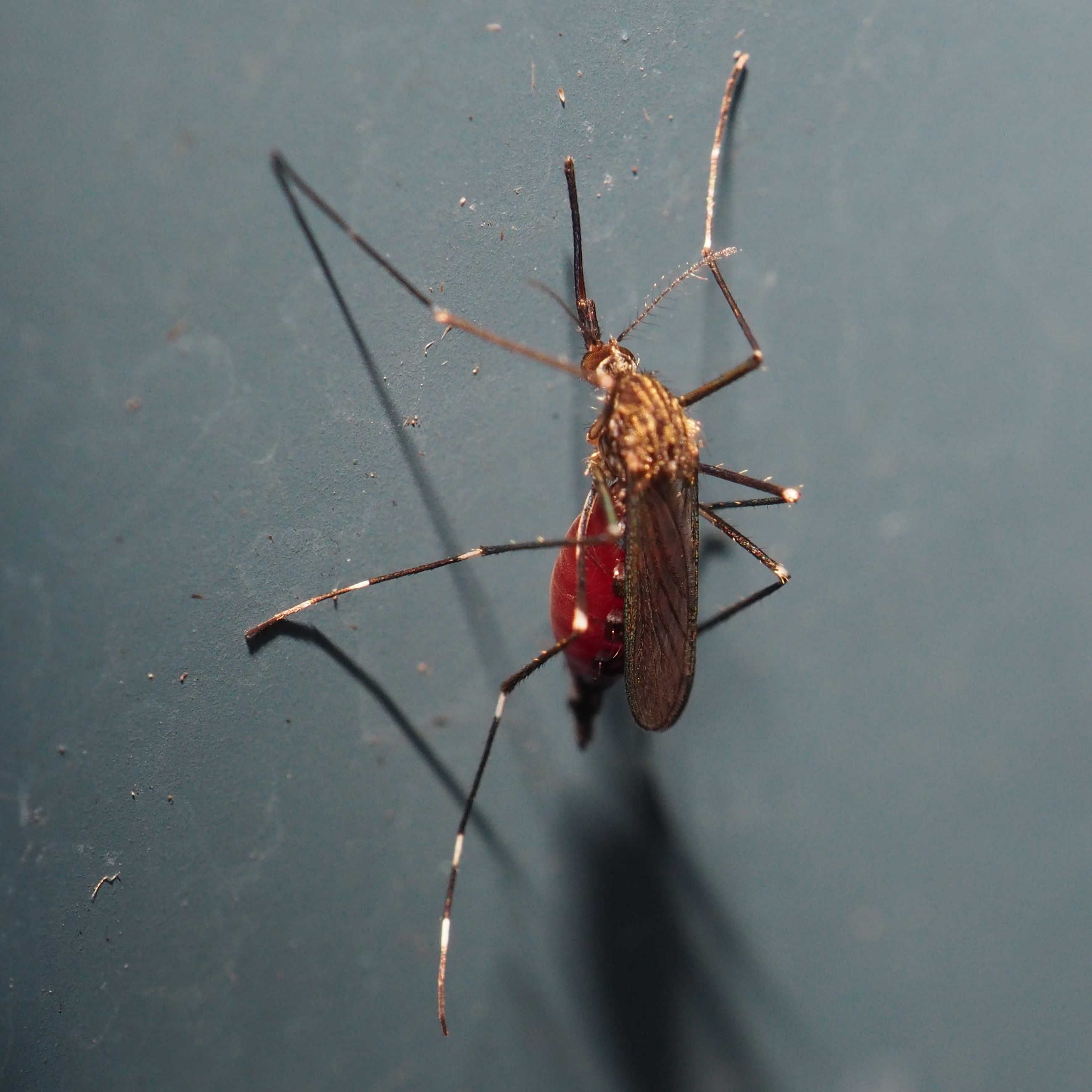
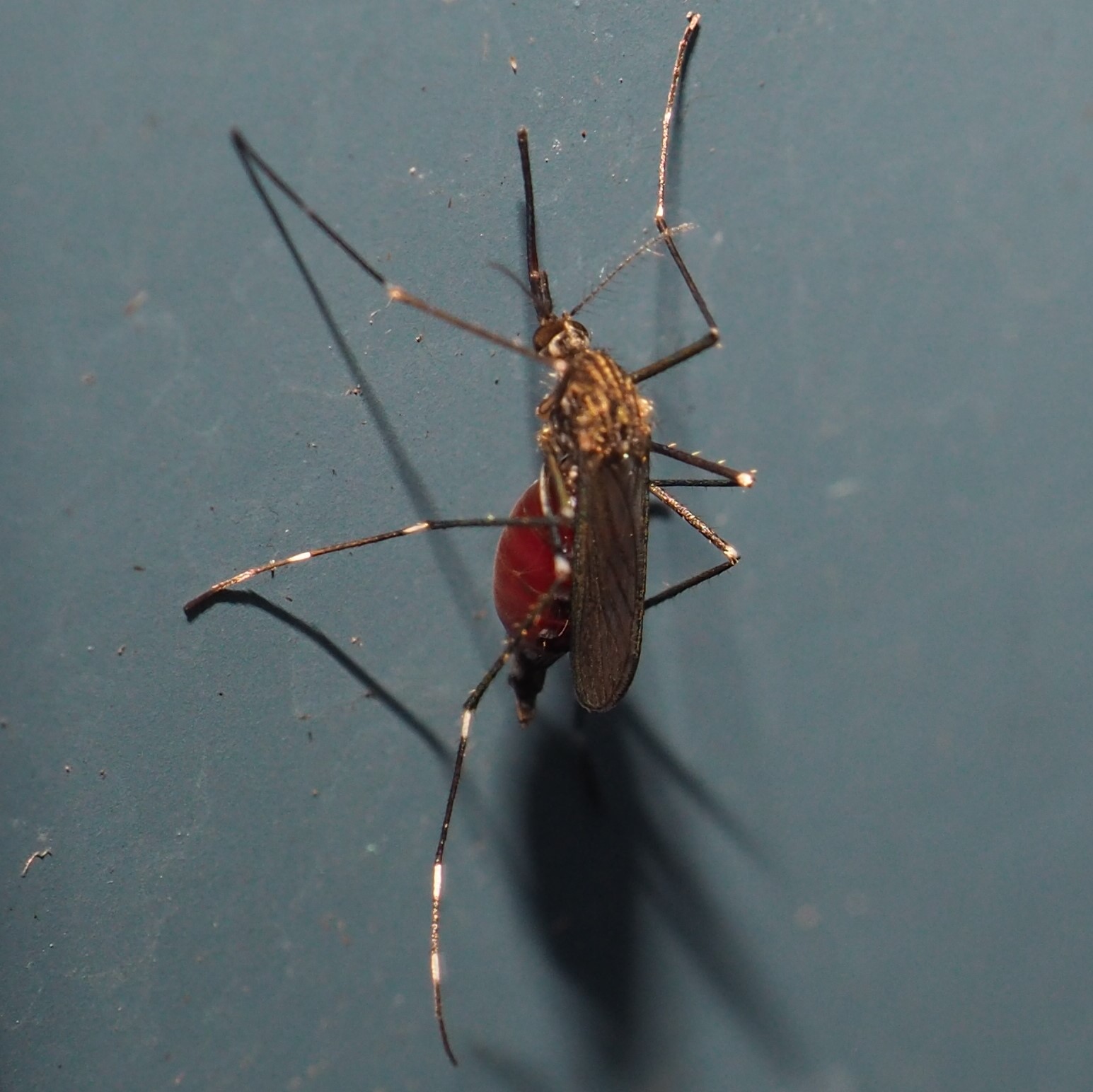
The only Orthopteran I saw all week was this grasshopper. I lie. A tiny grasshopper leapt in front of me out front but I didn't have my camera on me then. :-(



Here are the only Harvestmen I saw.


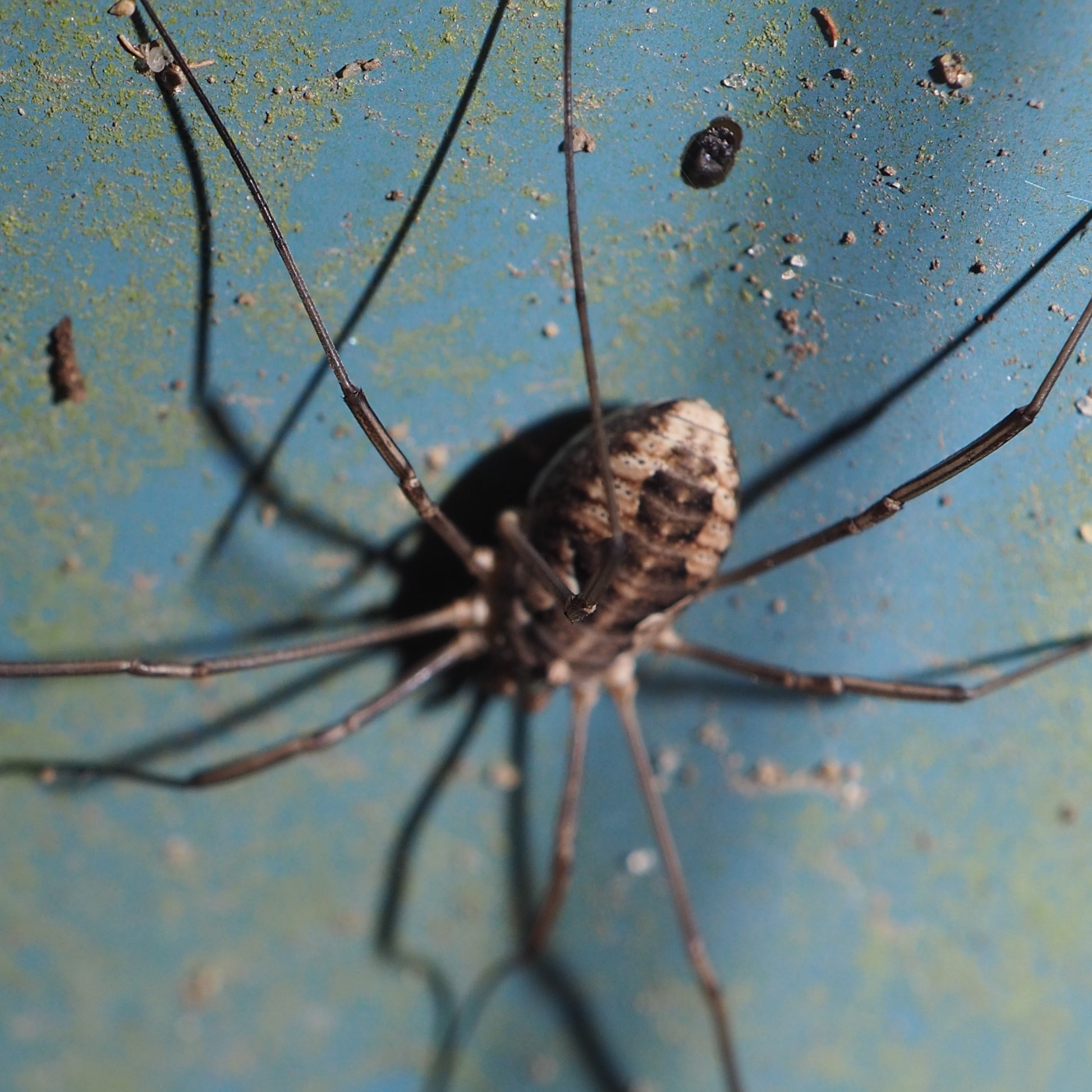
Sigh. I neither saw nor heard our beloved Froggy this week. Keep your fingers crossed. Here are some of the Mysteries I shot though. First is a little nymph of something over in one of the redbud saplings. Second is the discarded skin of some creature. Third is the image of a Roman emperor left when a butterfly flew off.
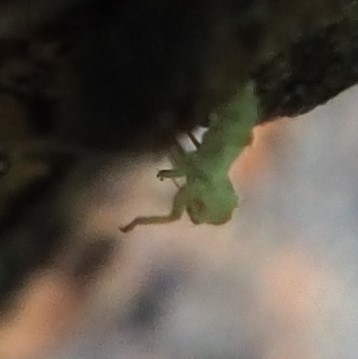
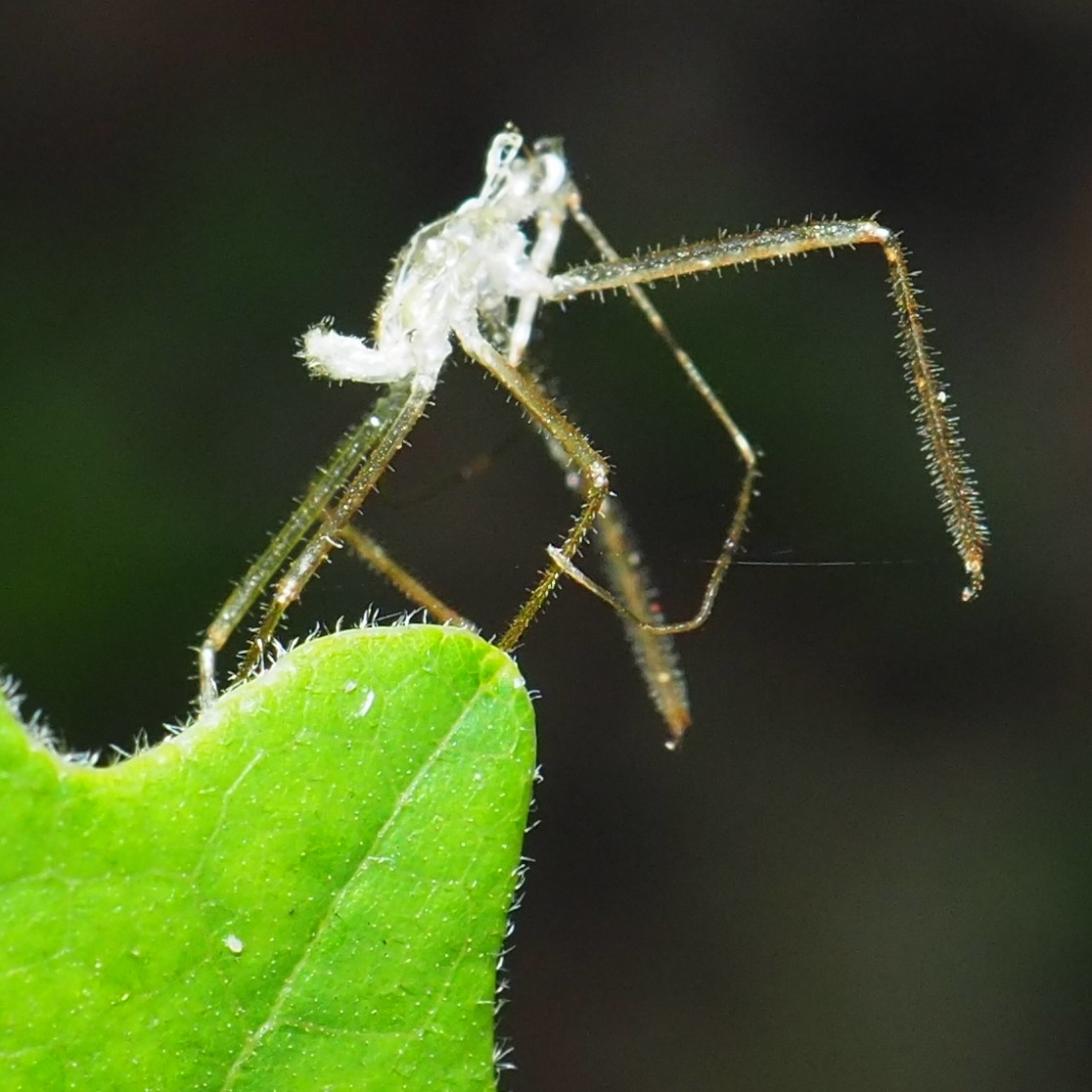

Here is one of those tiny snails. And now we are into the company of spiders! The little Cellar Spider, genus Pholcus is #2. And third is the Common House Spider.

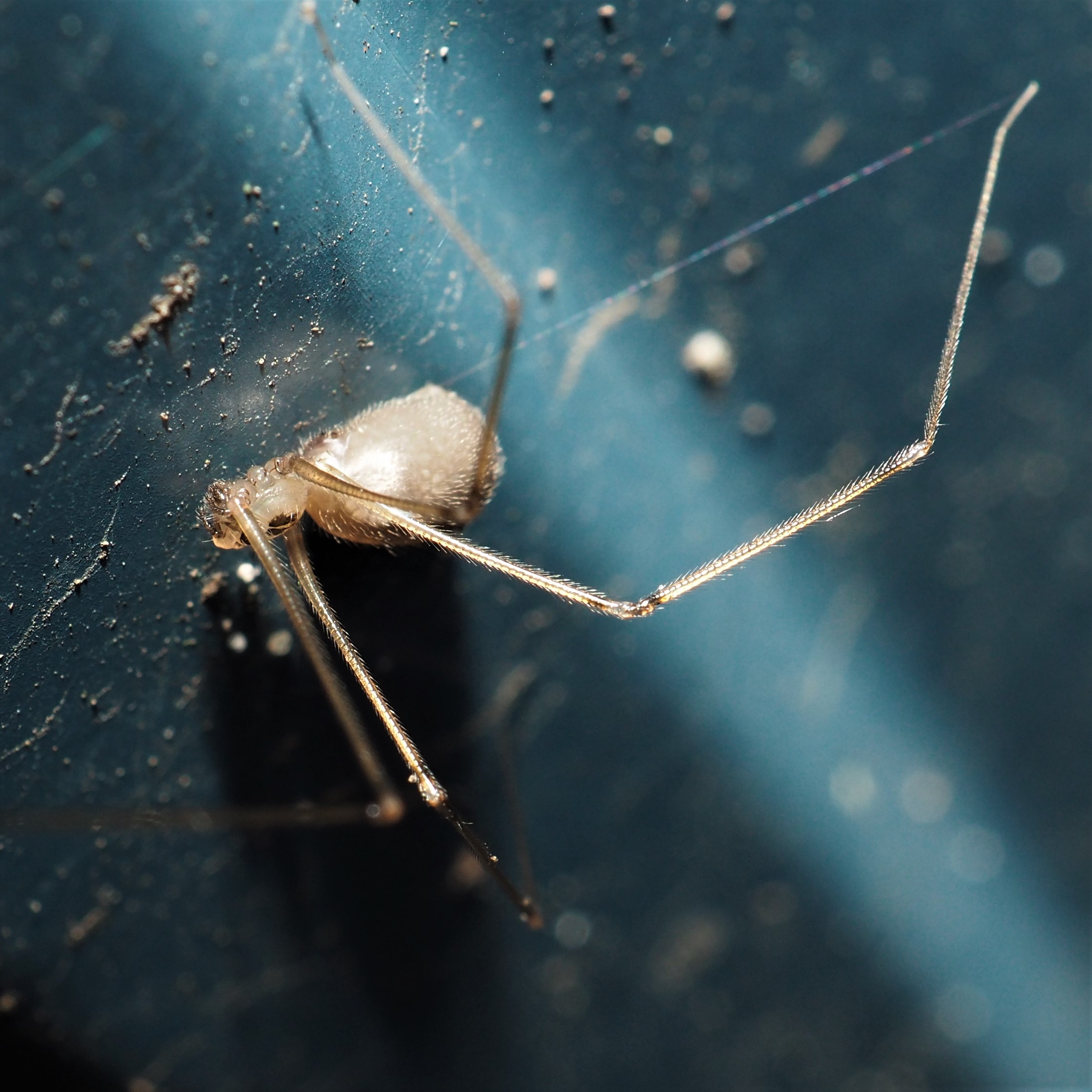
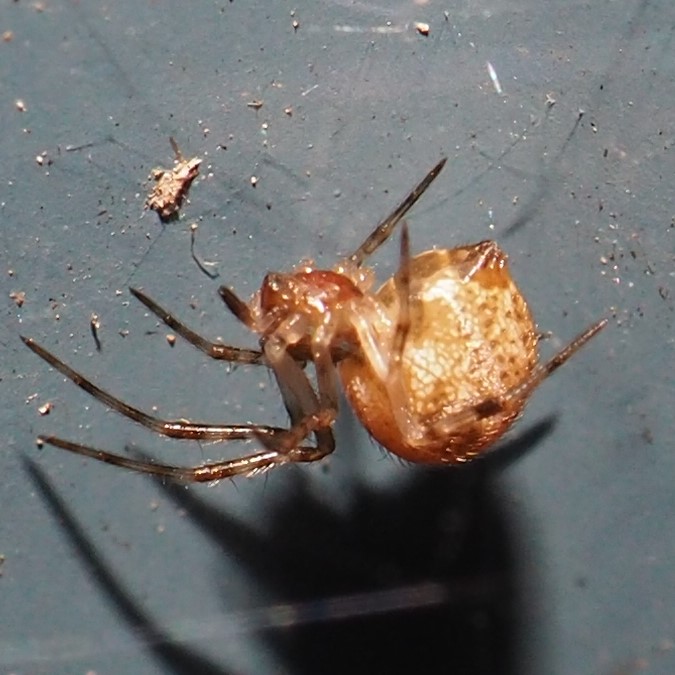
The Common House Spider was enormously Common this week. With all kinds of prey. Several color patterns, including this spider with the nose. The Grass Spiders have grown large over the summer. Here is a lovely web made by an orbweaver.
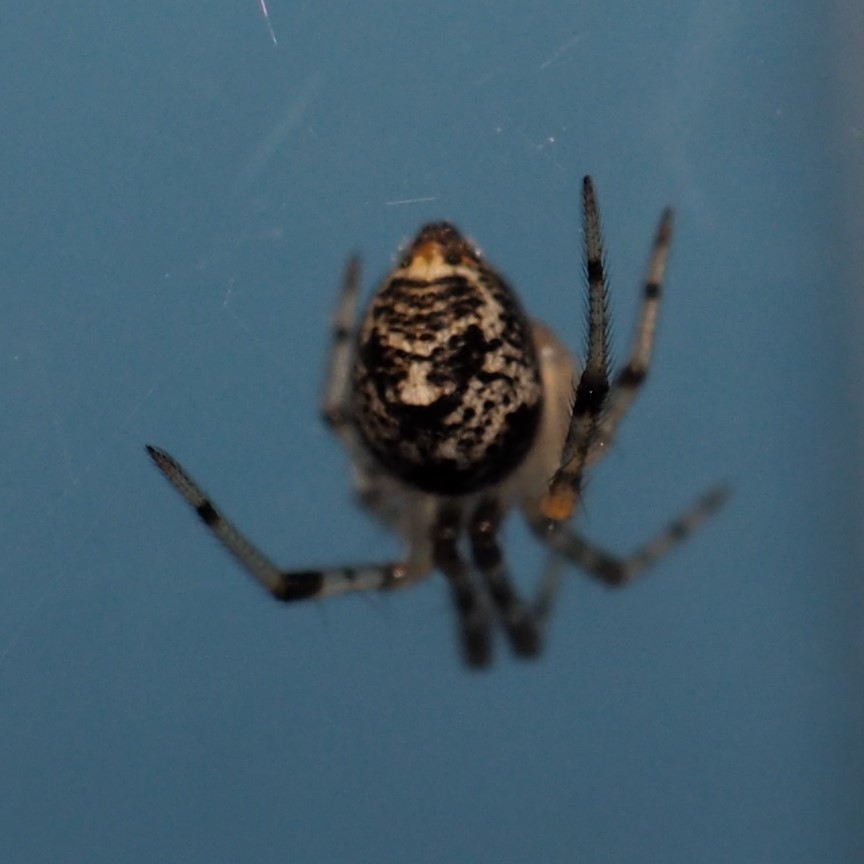

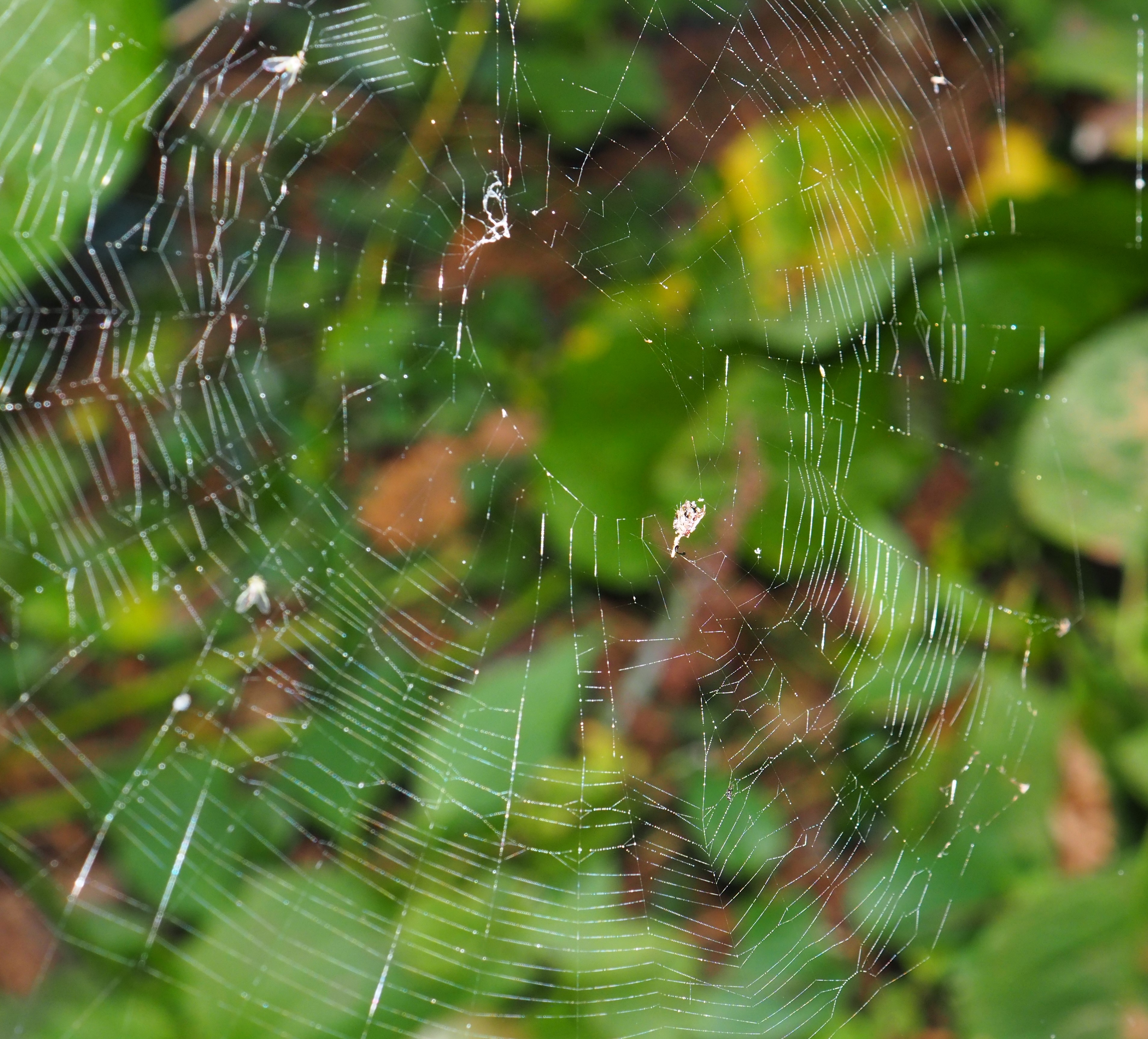
Here is a Double-banded Scoliid Wasp (Scolia bicincta). What a beautiful large wasp.
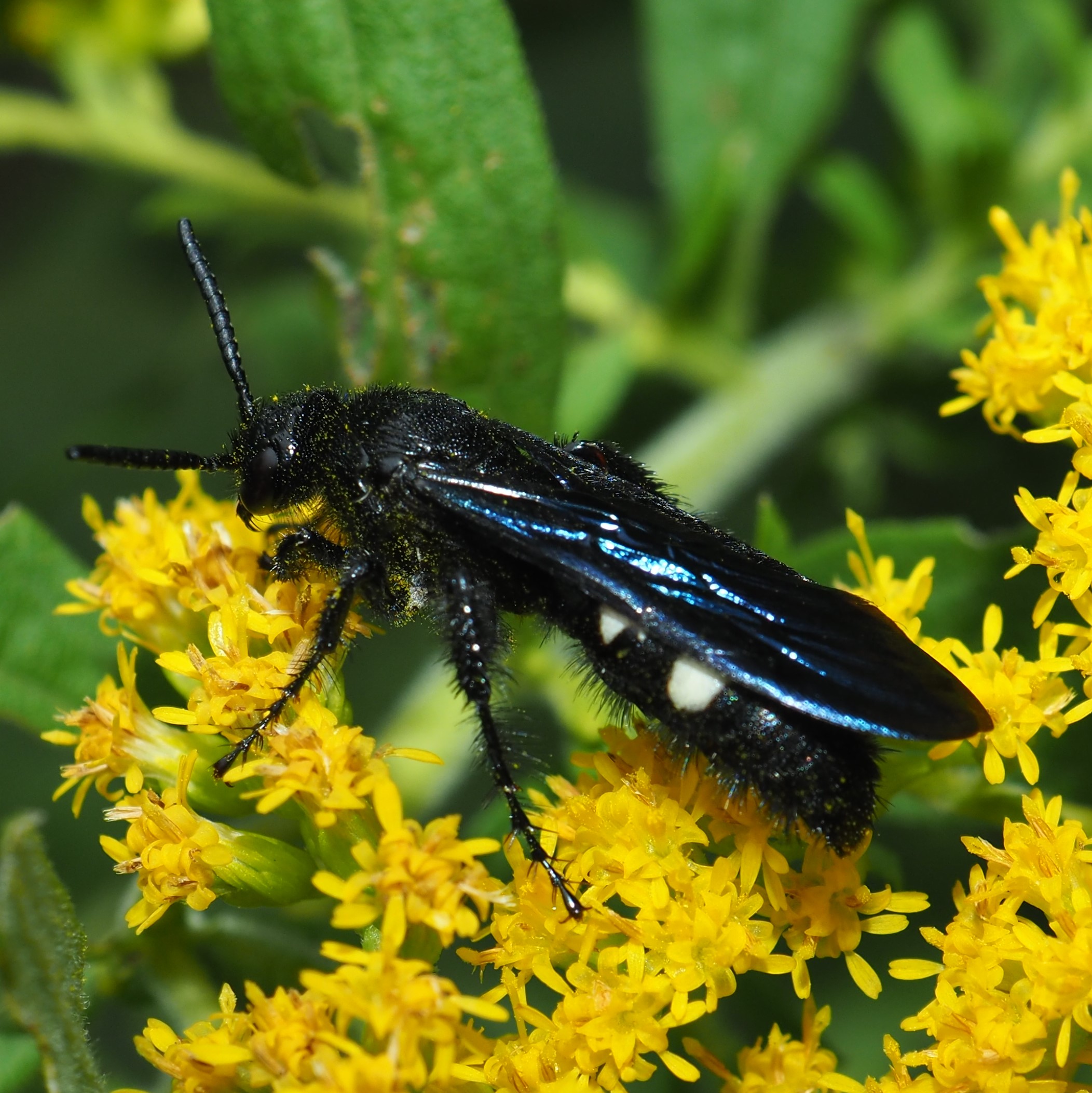
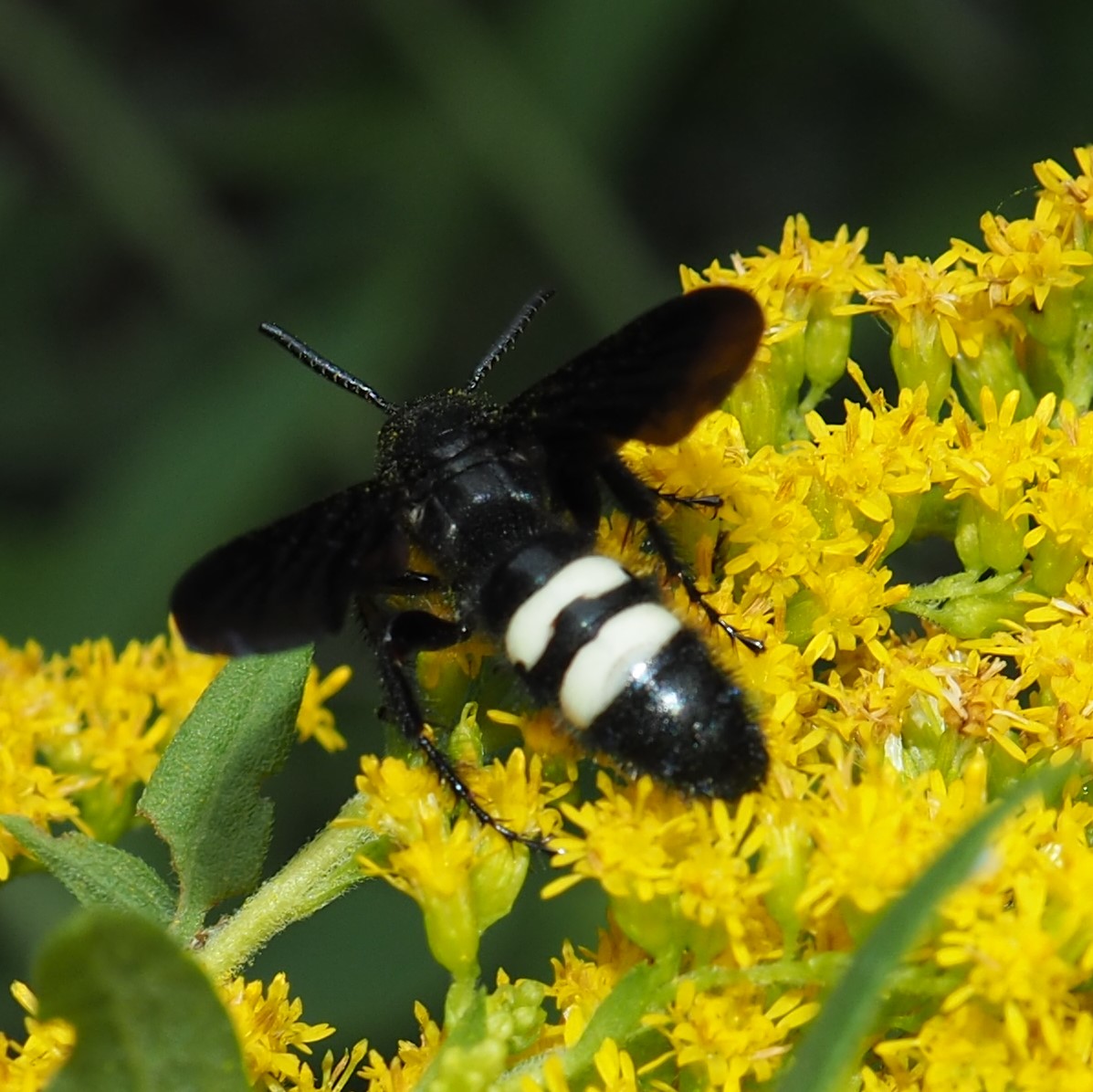
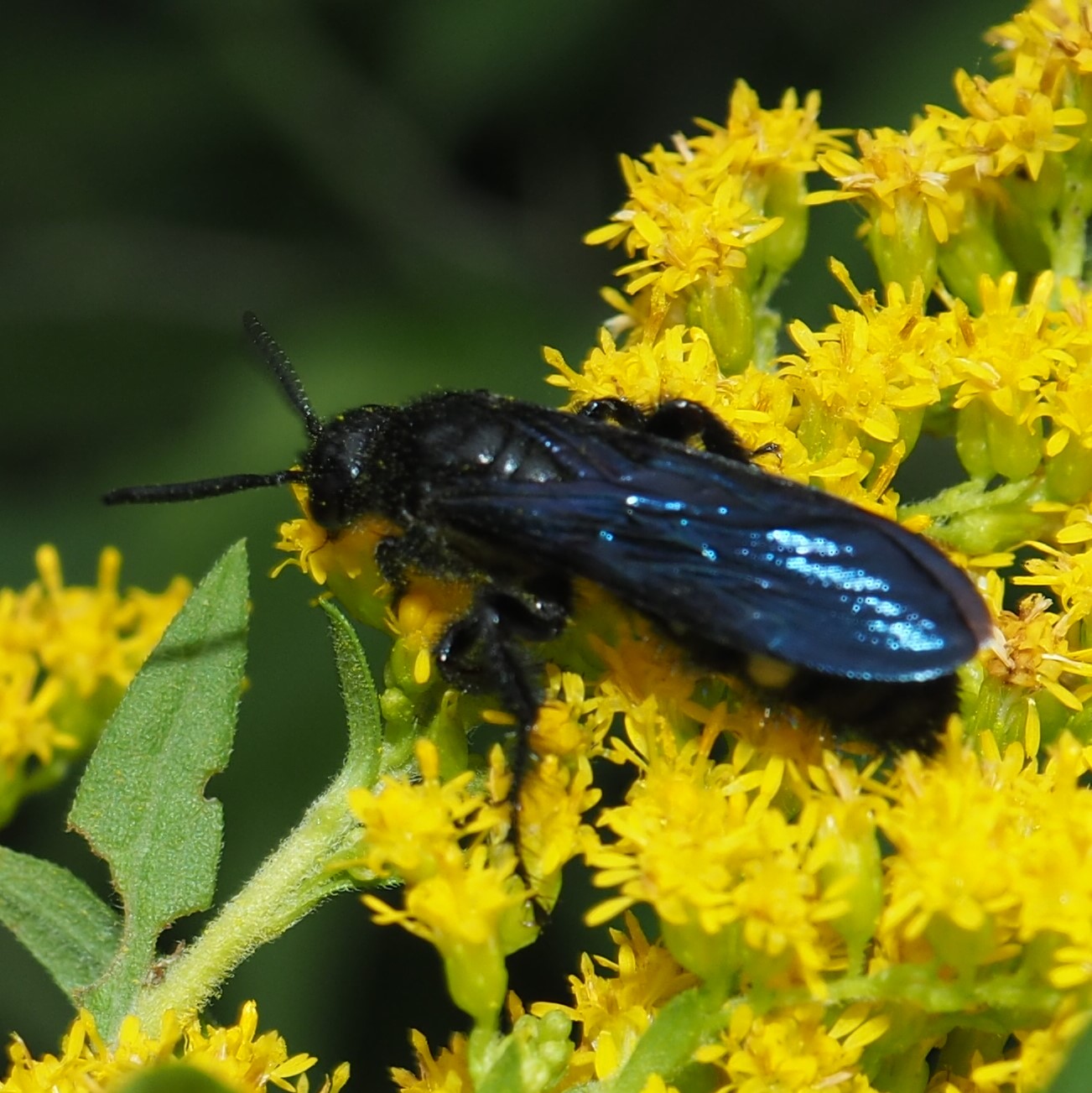
I can't tell if this is a Bee or a Wasp. But it's a tiny ball of energy.

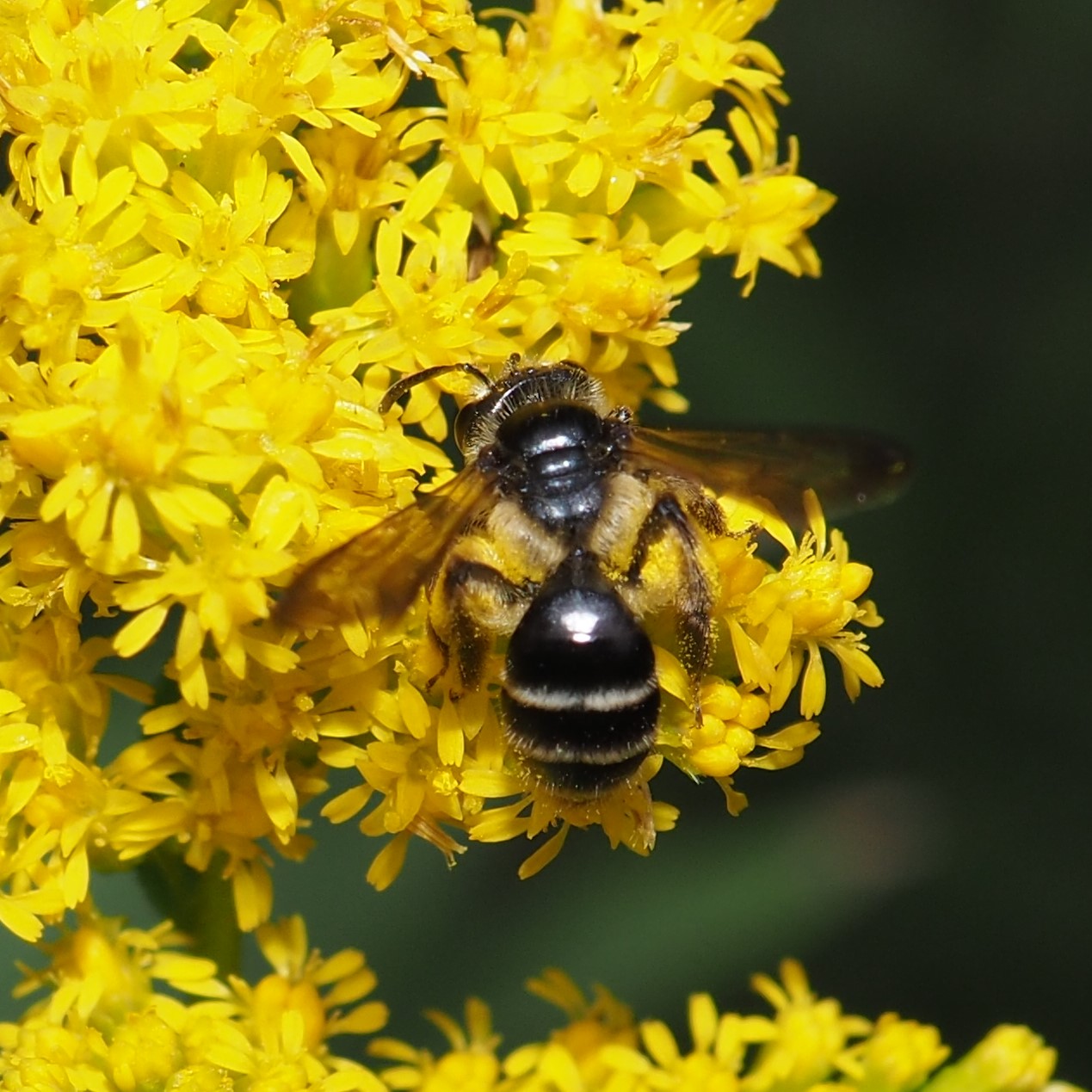
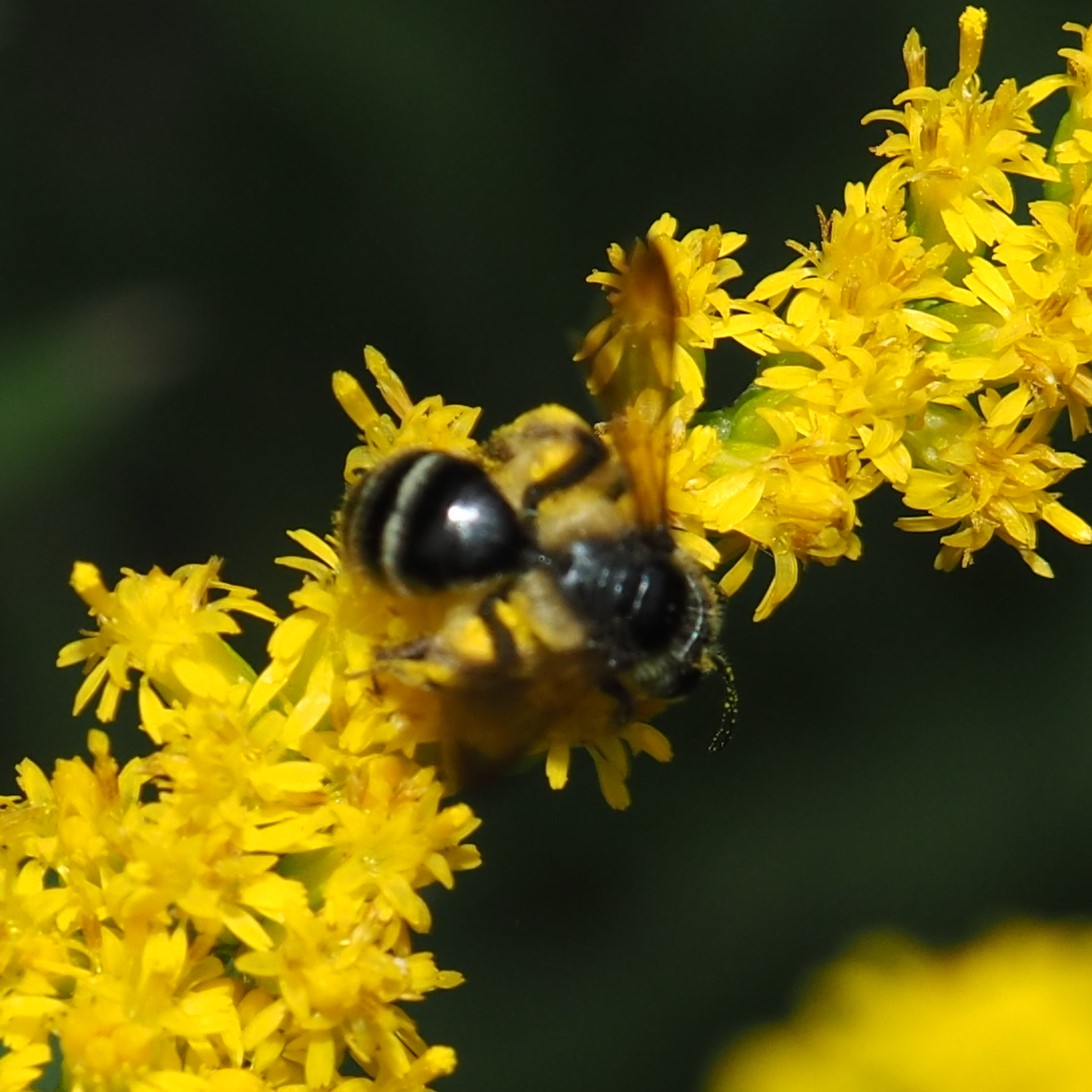
Ectemnius is a genus of big-headed wasps with bands that don't go all the way around the abdomen..



Last week we had this little teensy tiny Ichneumonid Wasp. I thought I had seen the only one in existence, but a couple of
days ago a similar one, even more skittish, showed up in the back yard. My son Chaim, an afficionado in Photoshop and Lightroom, is visiting after 3 years in Asia and helped me get numbers 2 and 3 into recognizable form. I believe their subject is at least a relative of number 1.

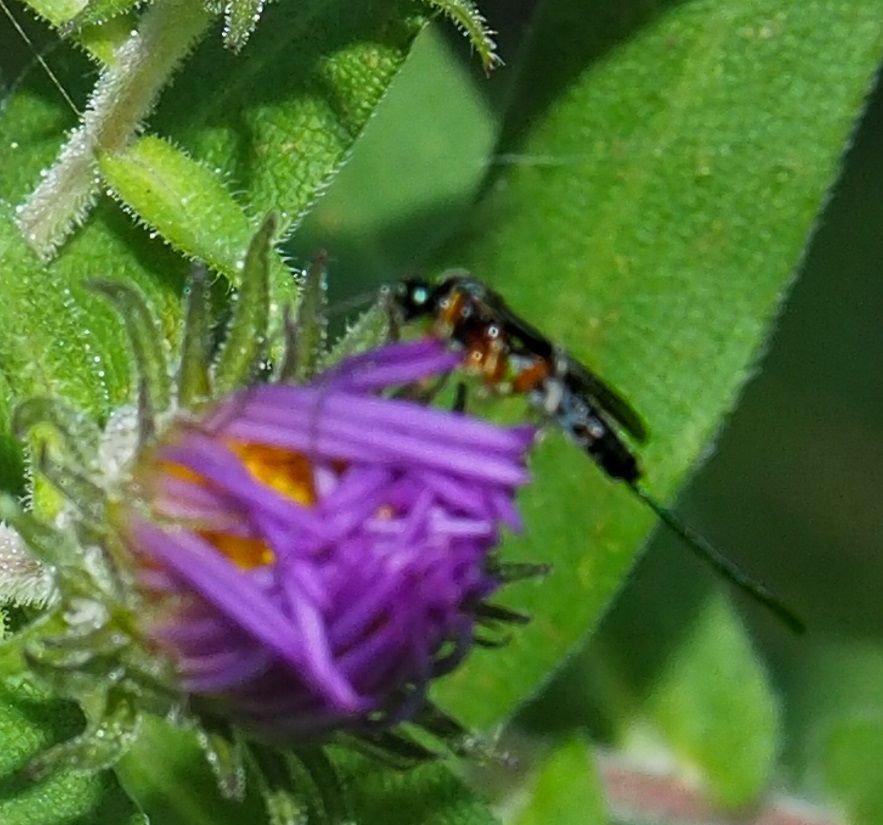
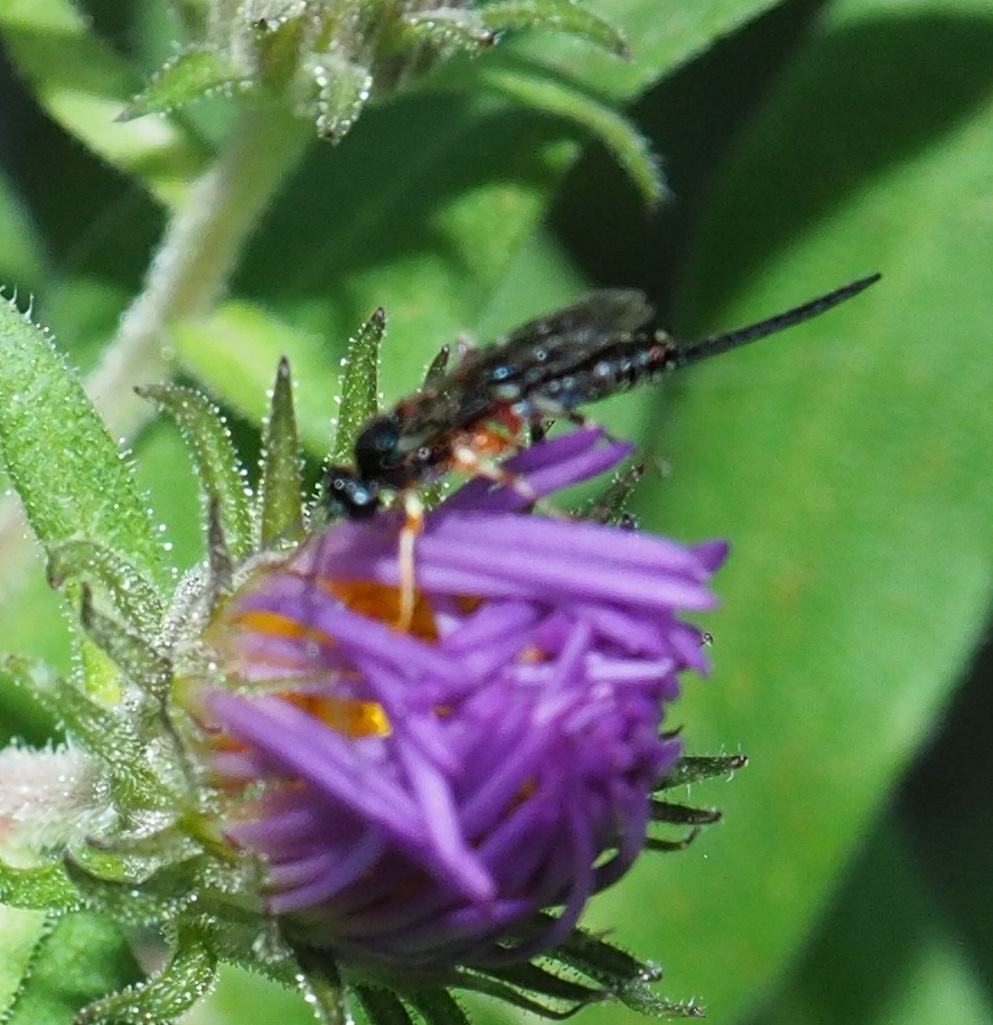
One more sweet little wasp - no name yet, but a pretty little thing. I am going to miss this Goldenrod, which is fading so fast.
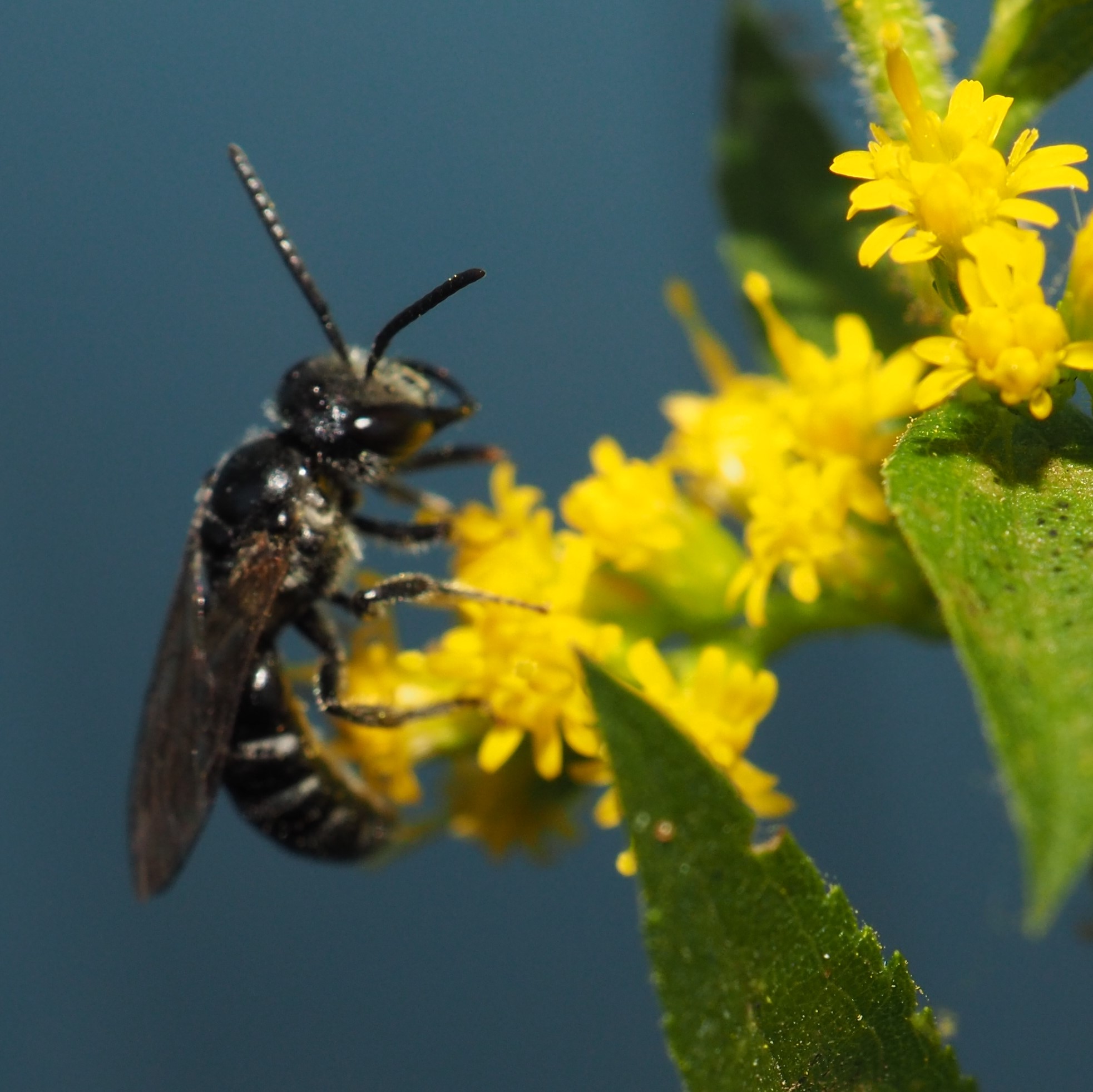
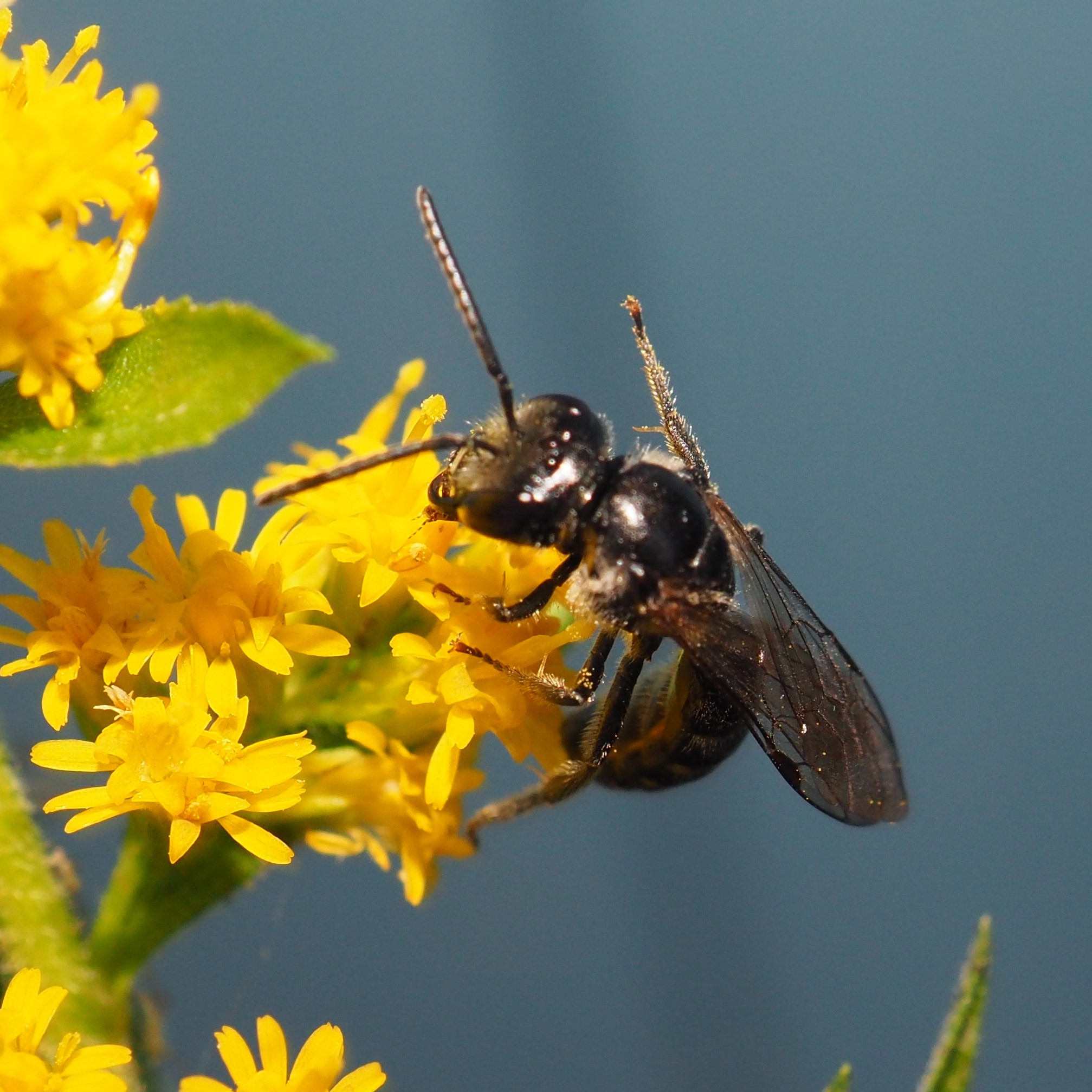
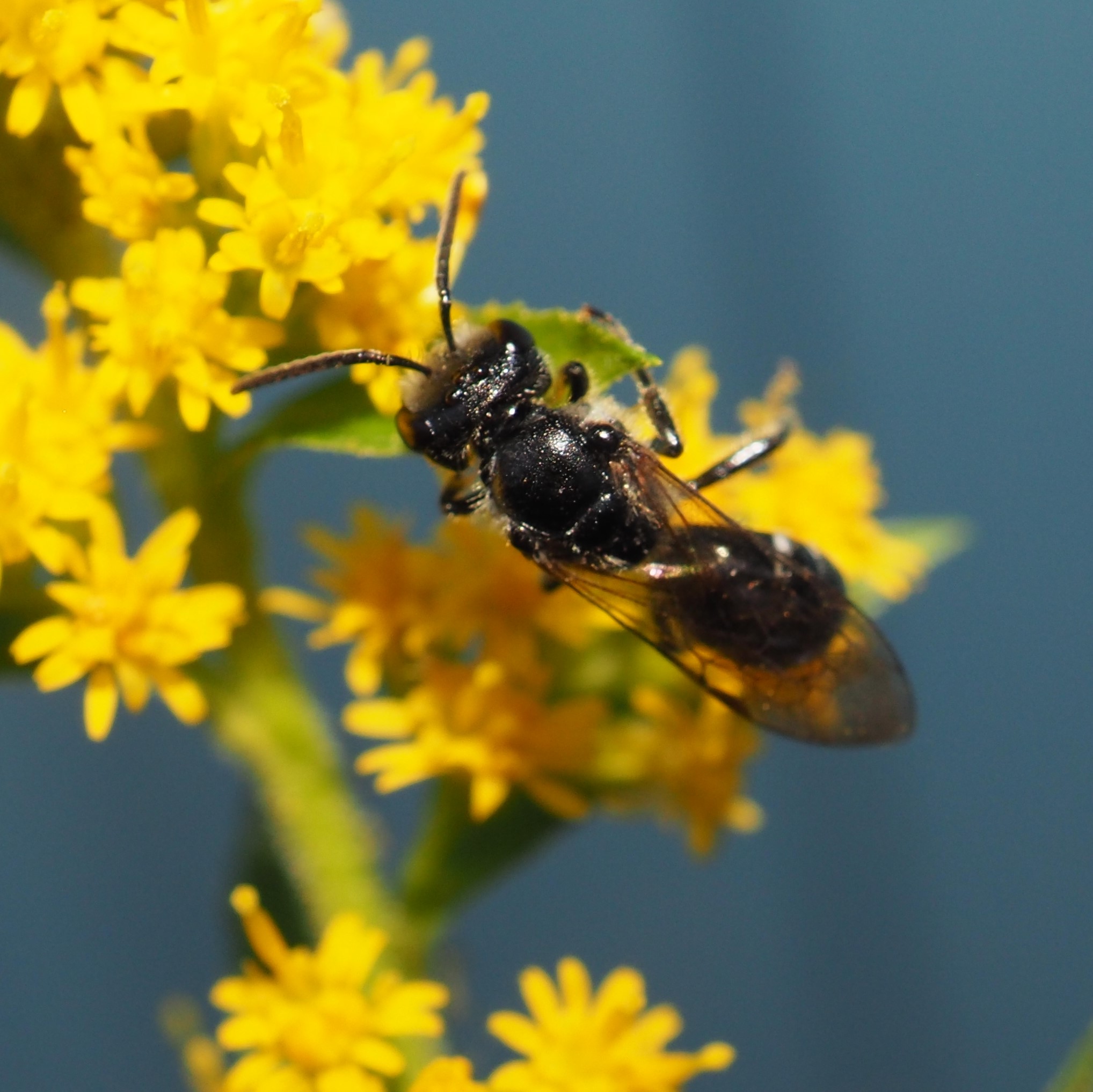
A few flowers to bring our week to a close. The softly colored Pink Water Lily, a yellowish-green one brought back from August (I think we have seen our last one of the season), and a view of the fishes swimming amongst the asters.
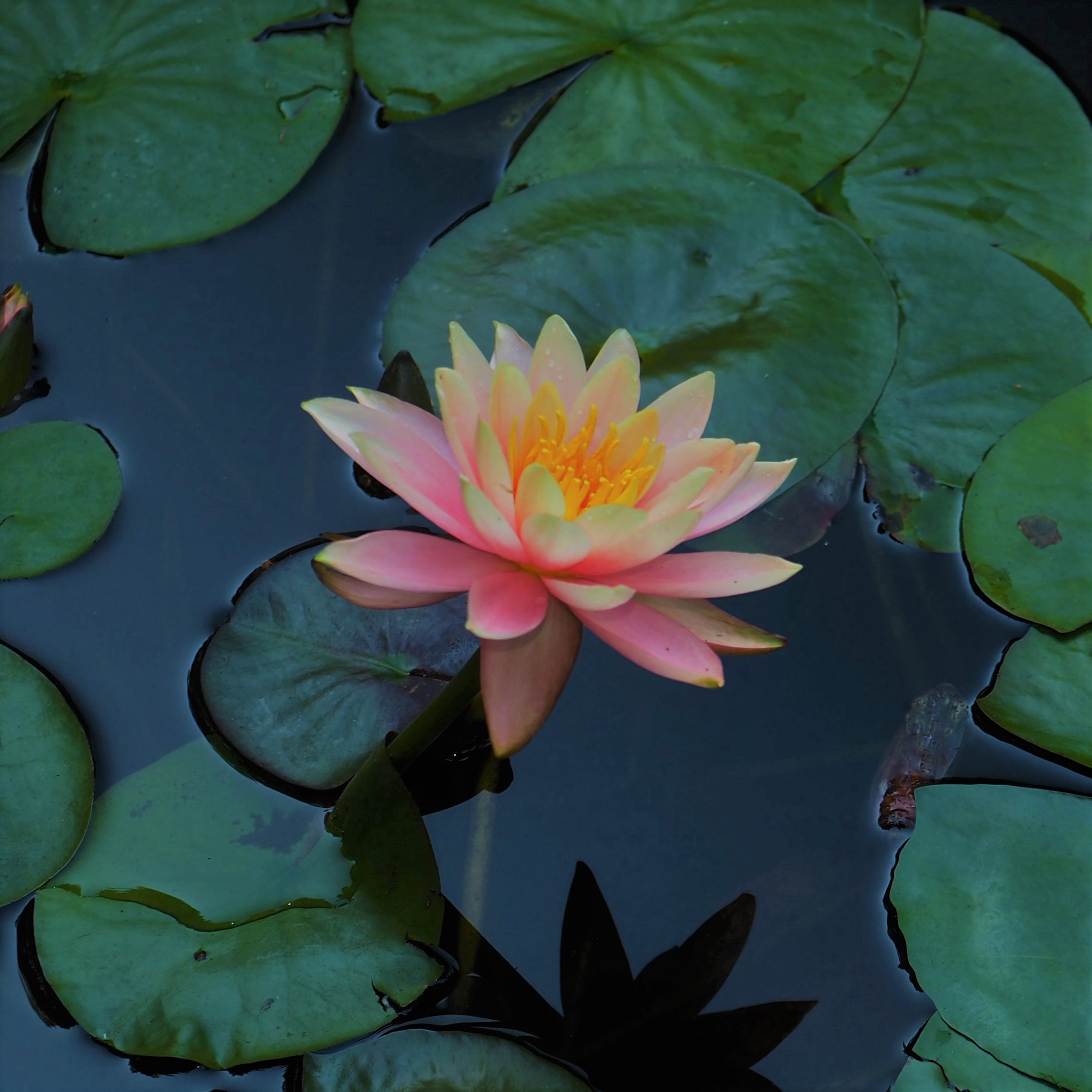
.jpg)

Even though we are in the midst of a super-humid few days, surely it will be passing soon - September is almost over! I'm going to get a flu shot tomorrow. I hope everyone is doing well, and having a wonderful fall or spring or both. Figure out that one!
Love, Martha
Back to September 15, 2019
Forward to September 29, 2019
Back to main menu
copyright Martha O'Kennon 2019







































































































.jpg)
